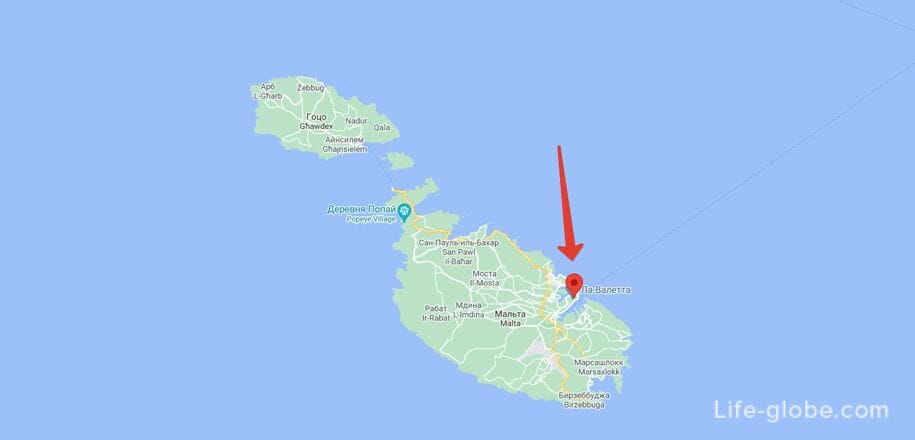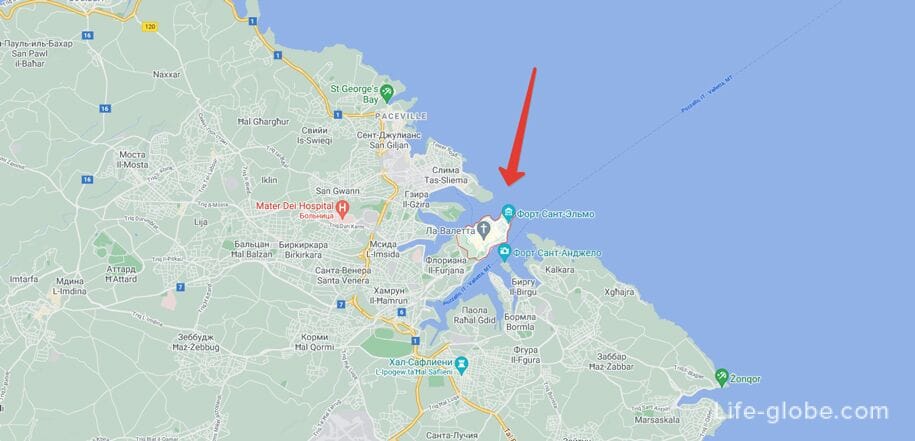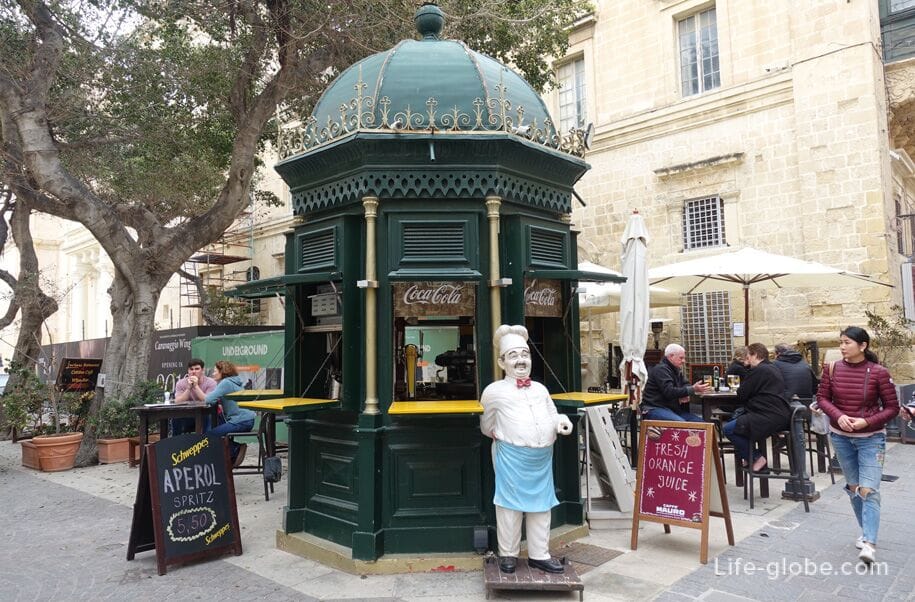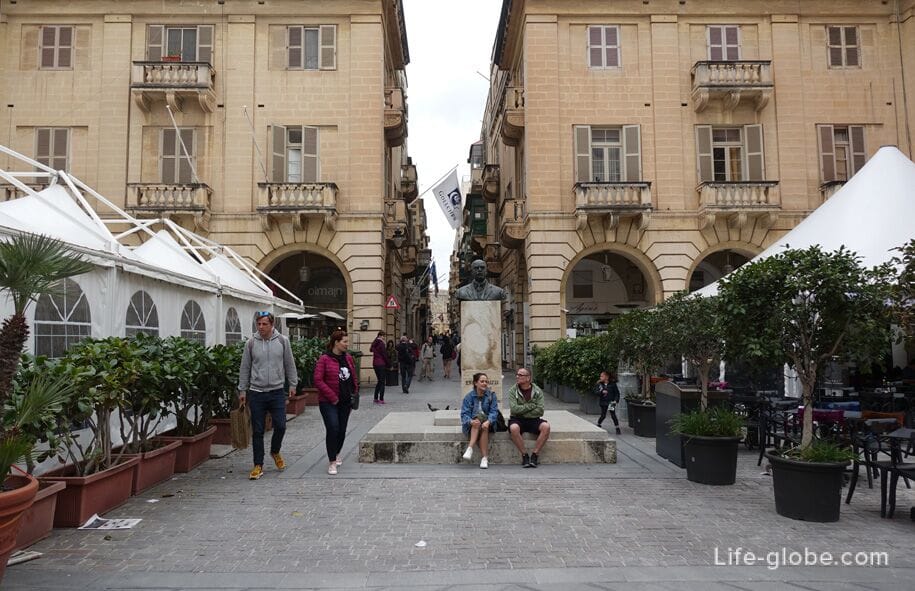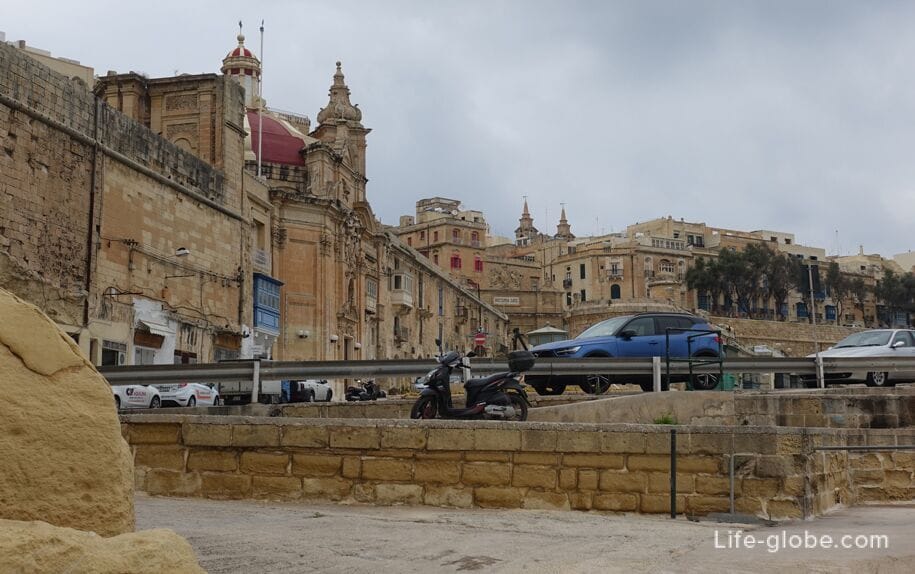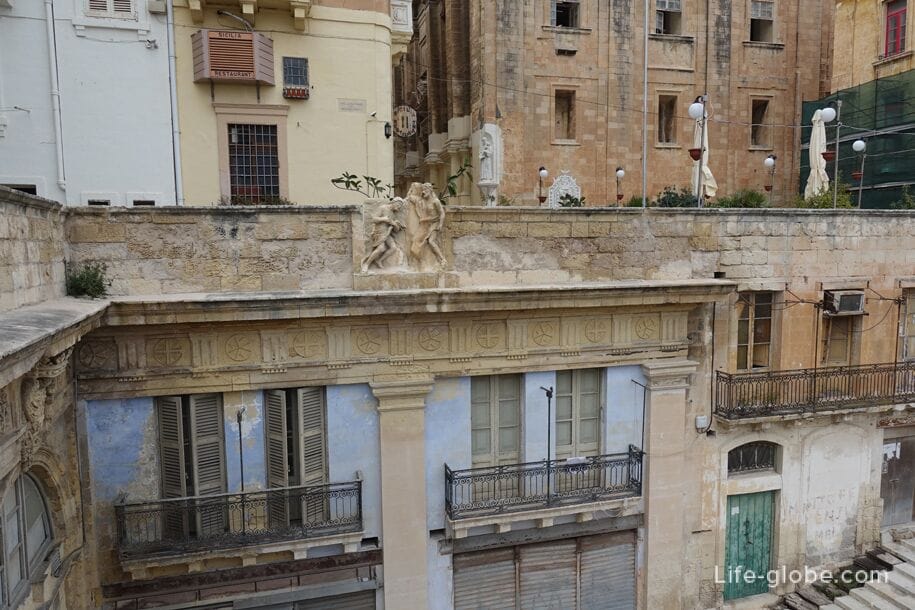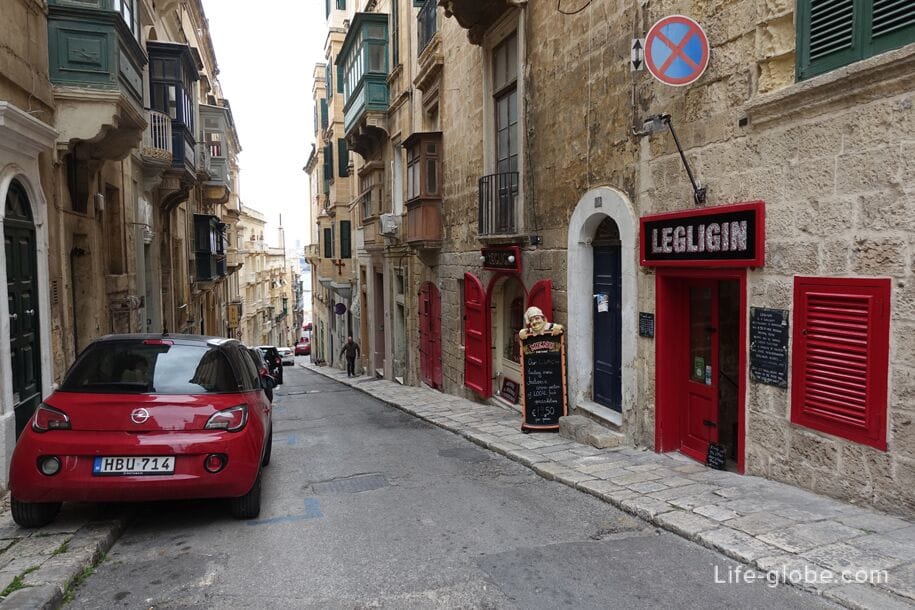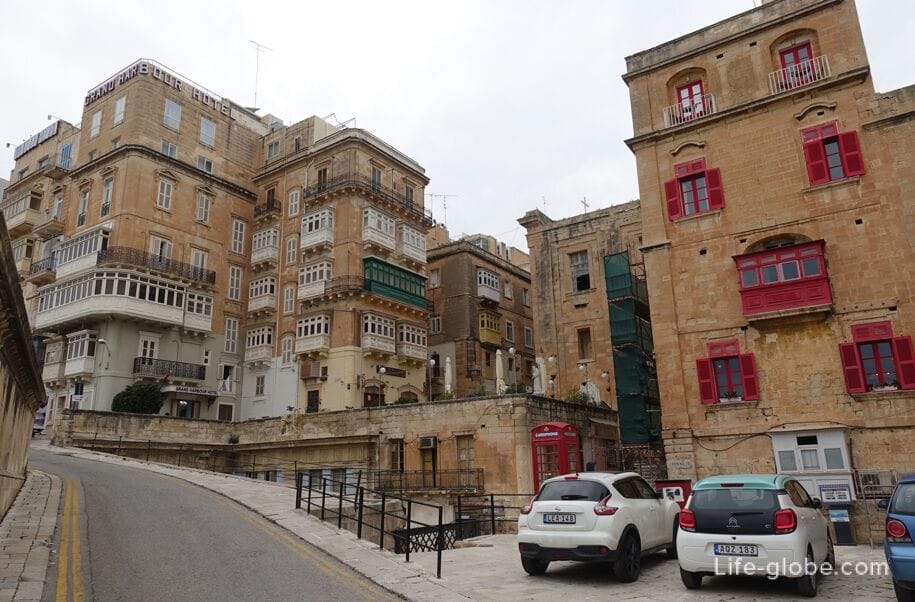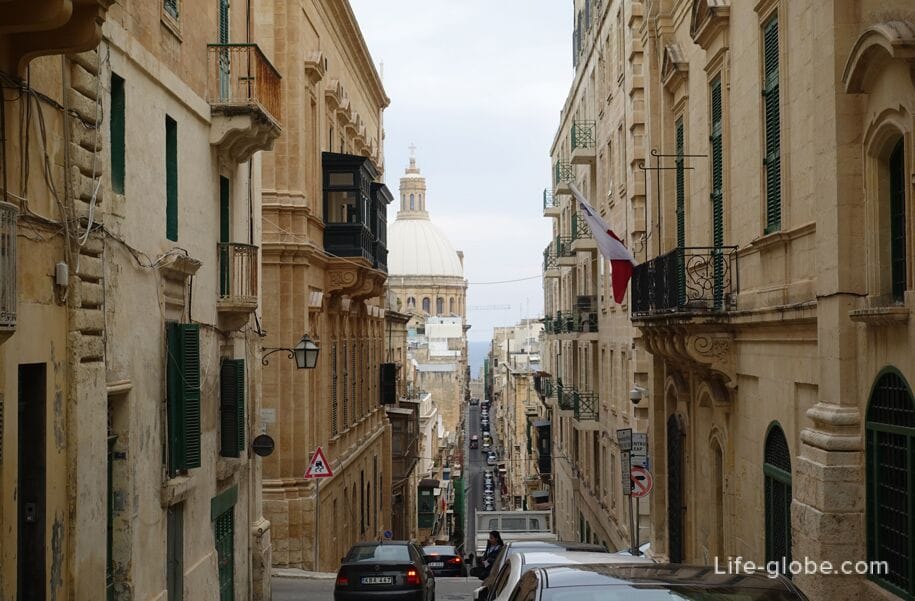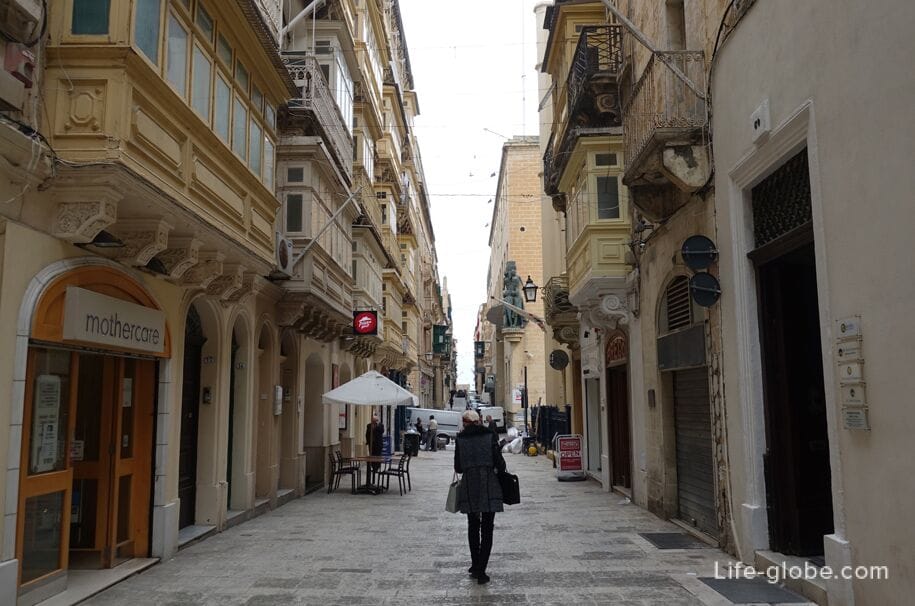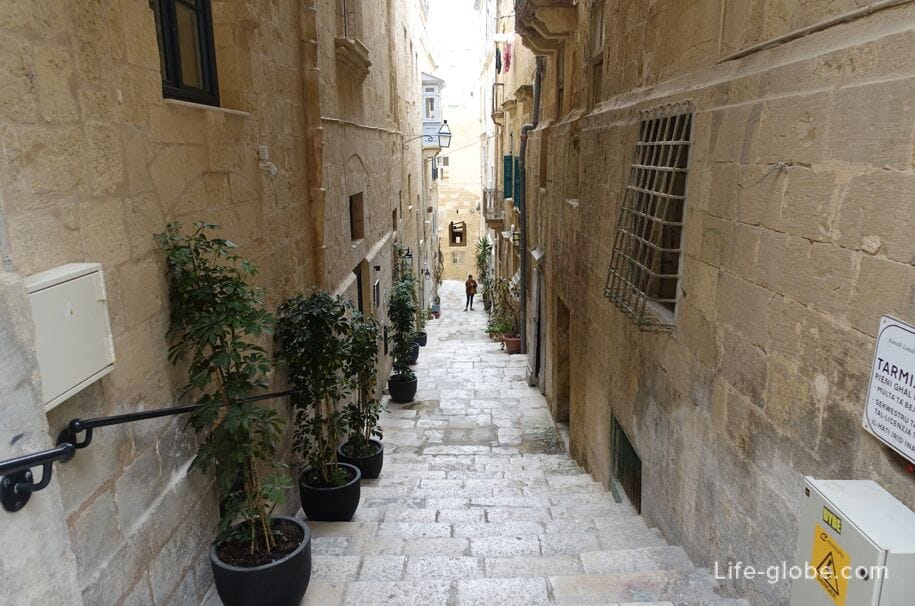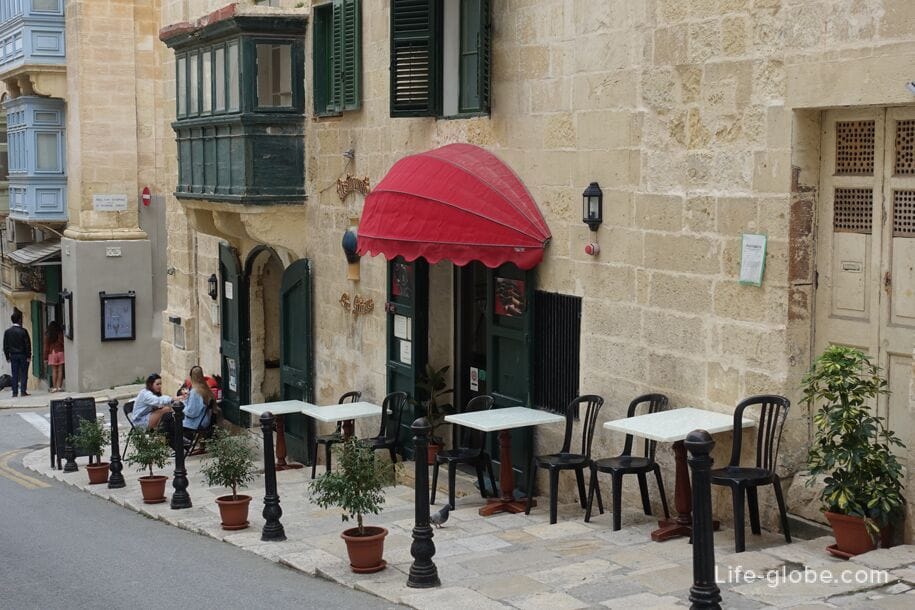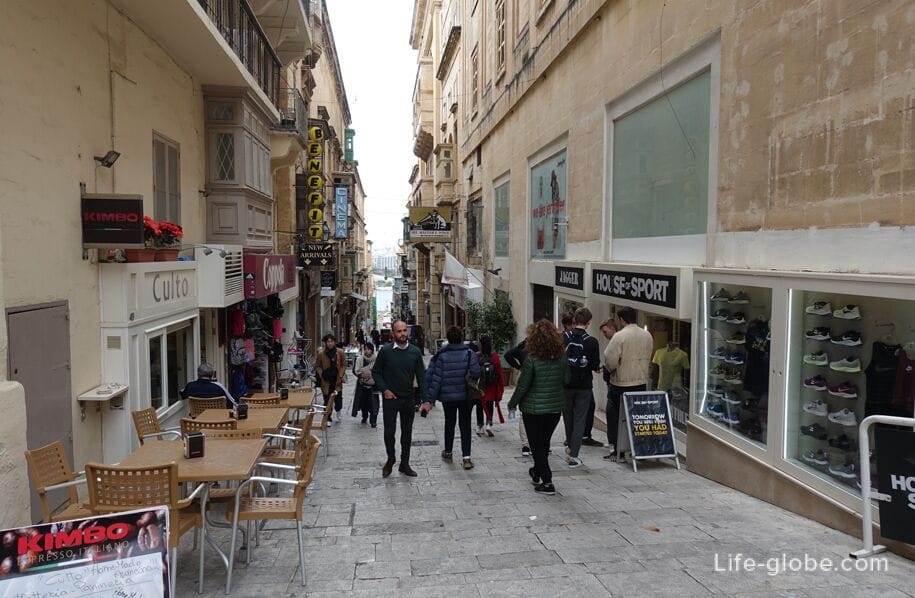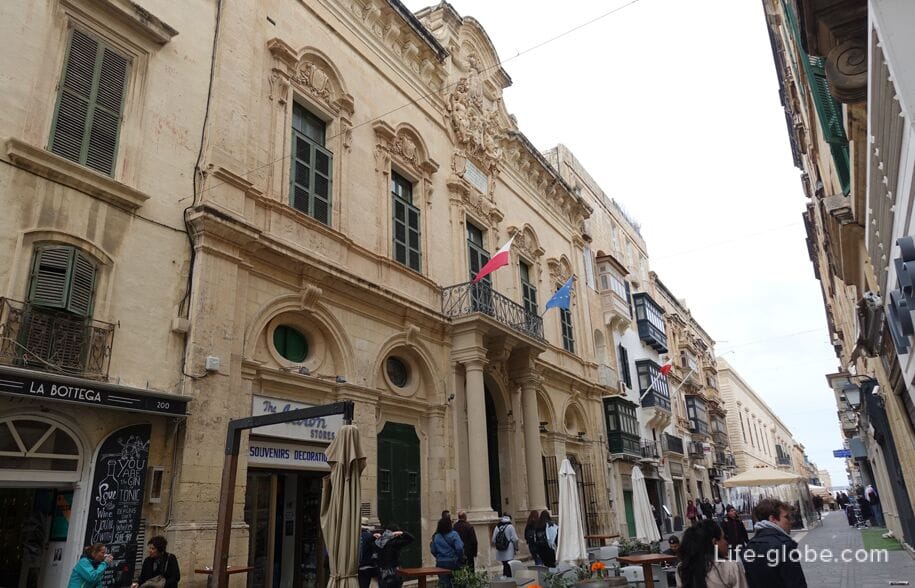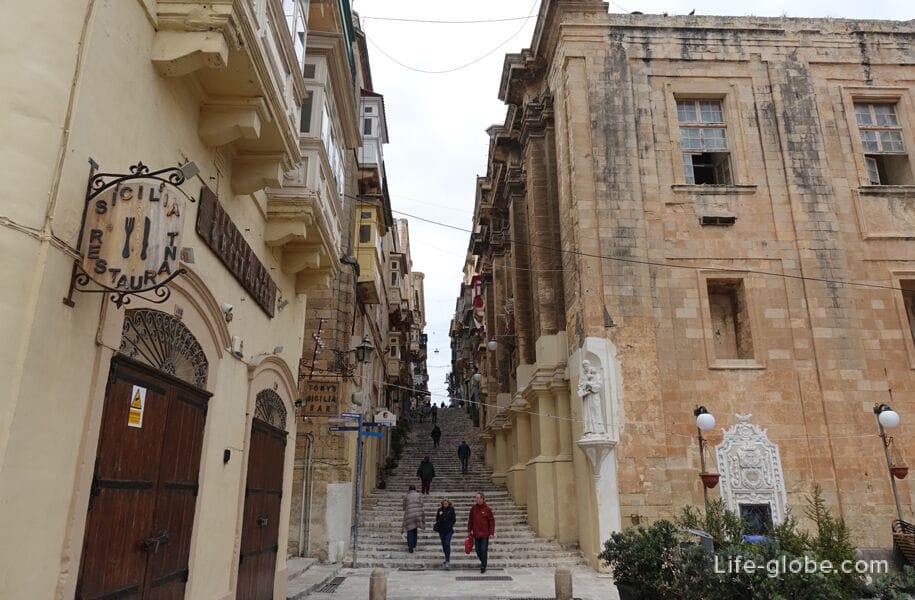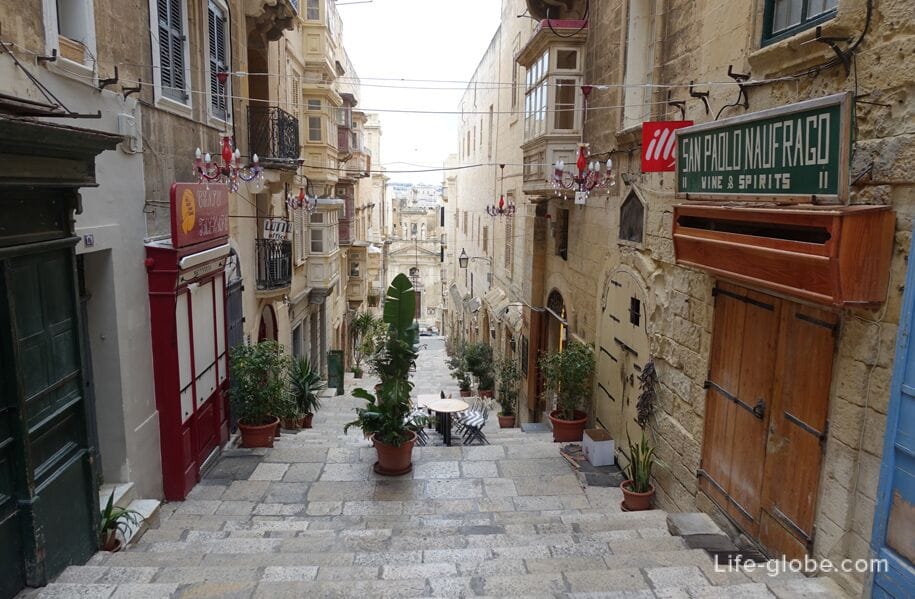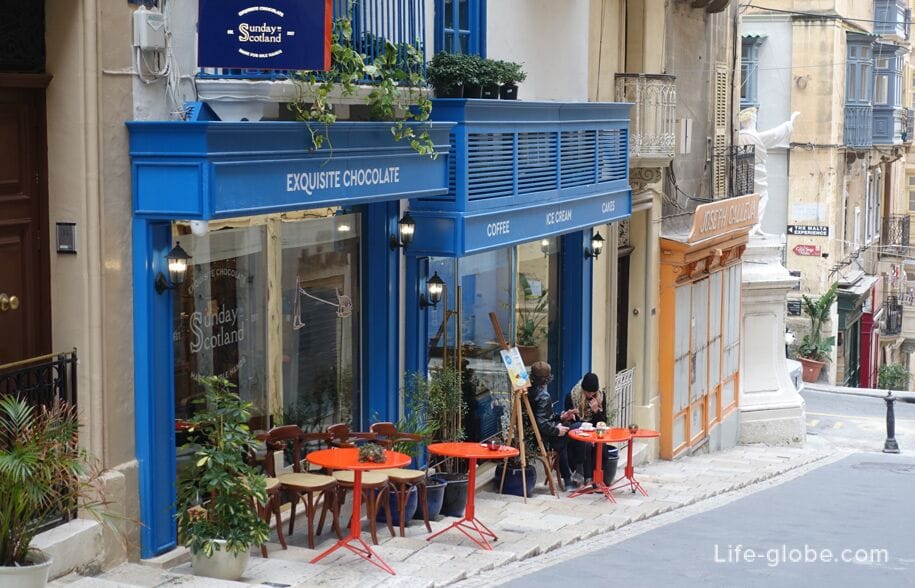
Valletta (Maltese name: il-Belt Valletta) is the capital of the Republic of Malta, located on the east coast of the main island of the country - the island of Malta.
The name "Valletta" was given to the city in honor of the founder of the city - knight and master of the Order of St. John, Jean Parisot de La Valletta, who, with the help of knights and Sicilian reinforcements, managed to protect the island from the Ottoman invasion during the Great Siege of Malta in 1565, after which a fortified city was created, the first stone of which was laid by the master himself.
Today the city is one of the most visited capitals and cities in the world. Its appearance has a Baroque character with elements of Mannerist, neoclassical and modern architecture. Although the Second World War left a serious mark on the city, in particular the destruction (after restoration and restoration work was carried out), the entire city of Valletta has been included in the UNESCO World Heritage List since 1980. UNESCO also called Valletta "one of the most concentrated historical sites in the world."
Valletta is one of the smallest European cities. But, despite its modest size, the city is one big attraction, where churches, palaces and historical buildings are densely built along narrow streets and around small squares.
In part of the historical buildings of the city there are now museums.

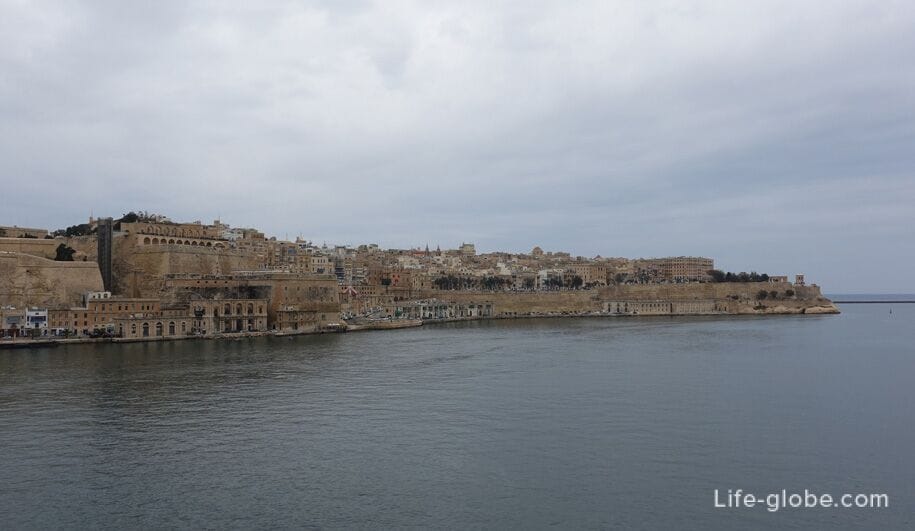

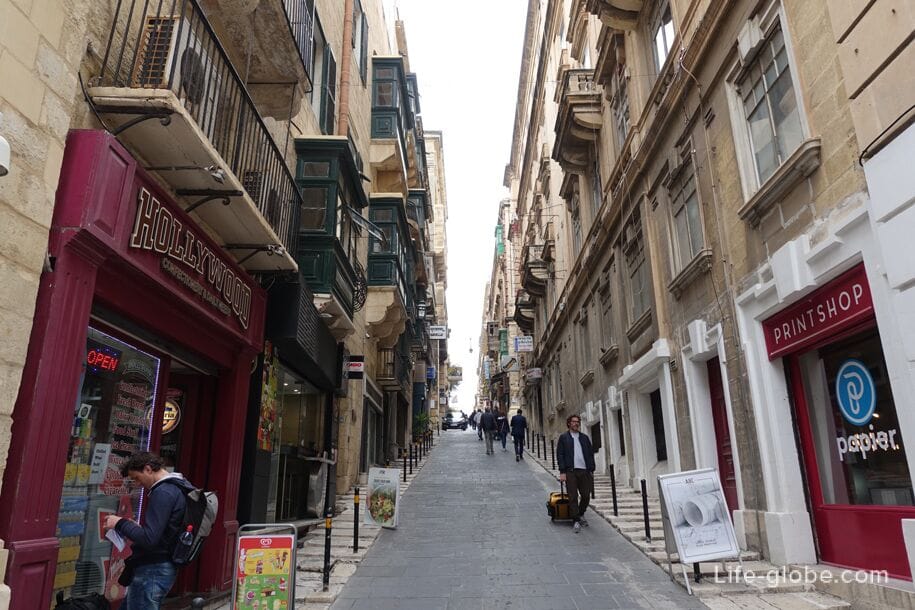
Valletta is located on a rocky peninsula between two natural bays of the Mediterranean Sea: Marsamxett Harbour and Grand Harbour.
On both sides of the city, at the Marsamxett Harbor and the Great Harbor, there are ferry piers from which you can visit the city of Sliema and the famous The tri-city of Malta, which includes the cities of Birgu, Bormla and Sengleya.
Learn more about Valletta - Sliema ferries...
Learn more about Valletta - Trigorodye ferries...

You can also take boat trips to the harbors from Valletta, or an excursion bus tour of Malta with an audio guide. All tours of Malta, including bus and sea, can be viewed and tickets can be purchased here →
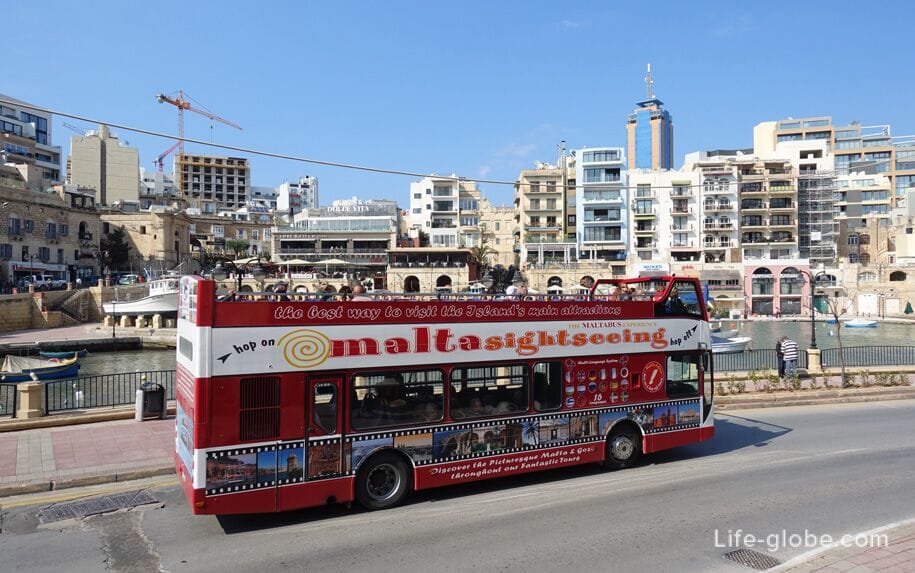
In Valletta itself, for a fee, you can ride in a horse-drawn carriage or on a tourist train.
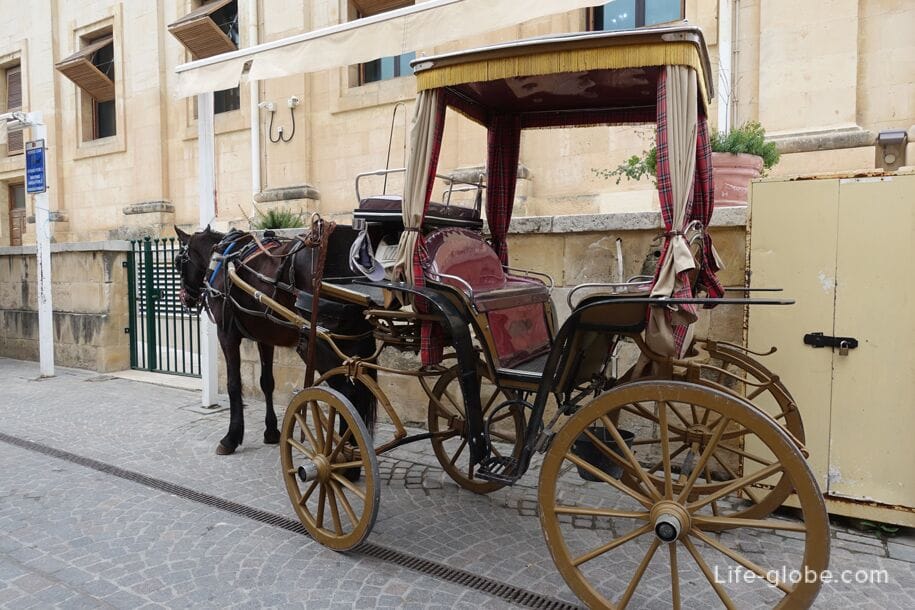
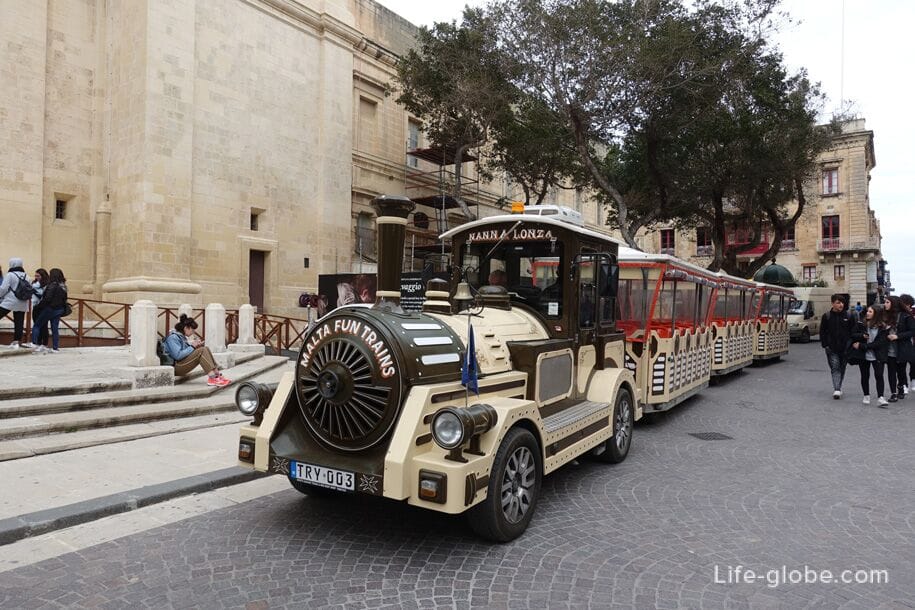
In the neighboring town of Floriana (Il-Furjana) there is a Malta cruise pier.

Valletta and the surrounding area is the venue of the Maltese Carnival, which is held in February on the eve of Lent. Carnival is held during the week, and, as a rule, includes masquerades, night parties, parades, marching bands and other festivities.
Christmas and other religious holidays are also celebrated in Valletta.
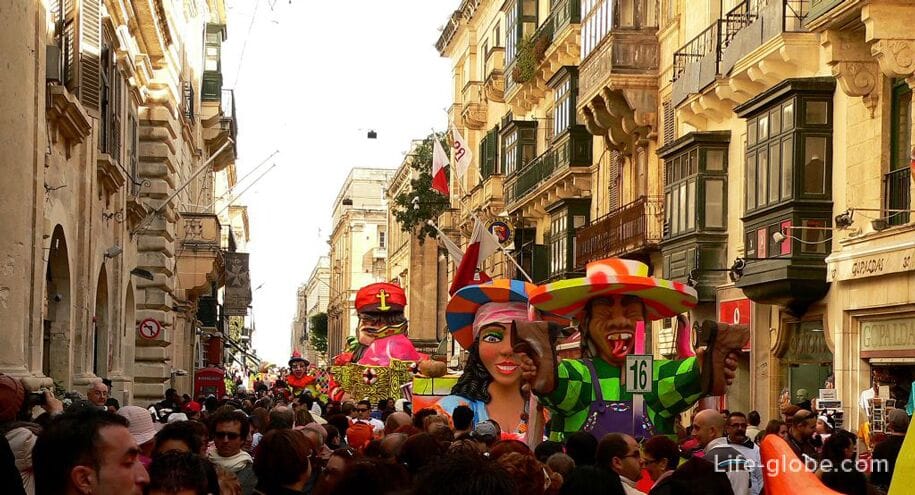
There are no beaches in Valletta. More about the Valletta coast...
However, the city is known for its defensive fortifications, consisting of the former city wall surrounding the city, as well as bastions and cavaliers. Today, beautiful panoramic views open from the former fortifications of the city, and small but cozy gardens are laid out on parts of the fortifications, there are also museums.
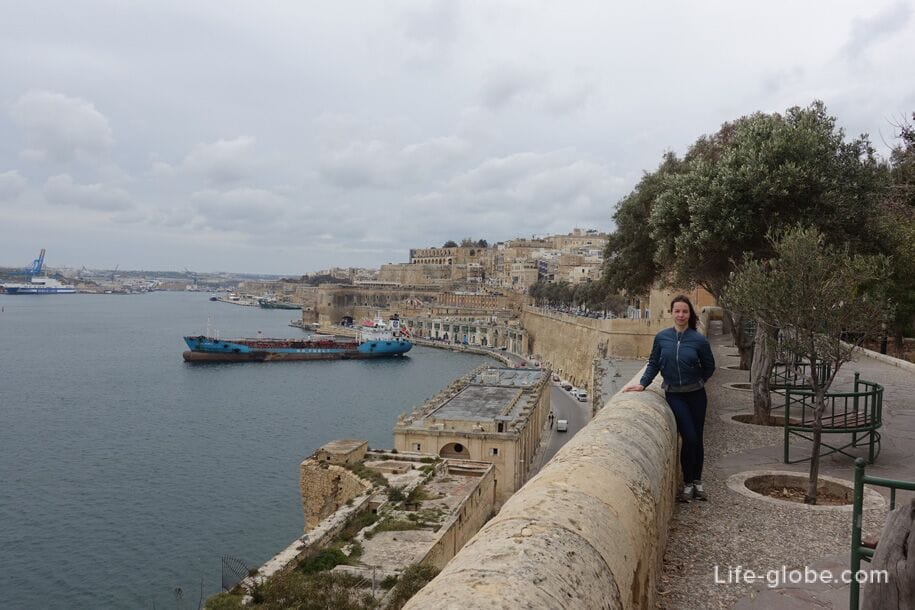
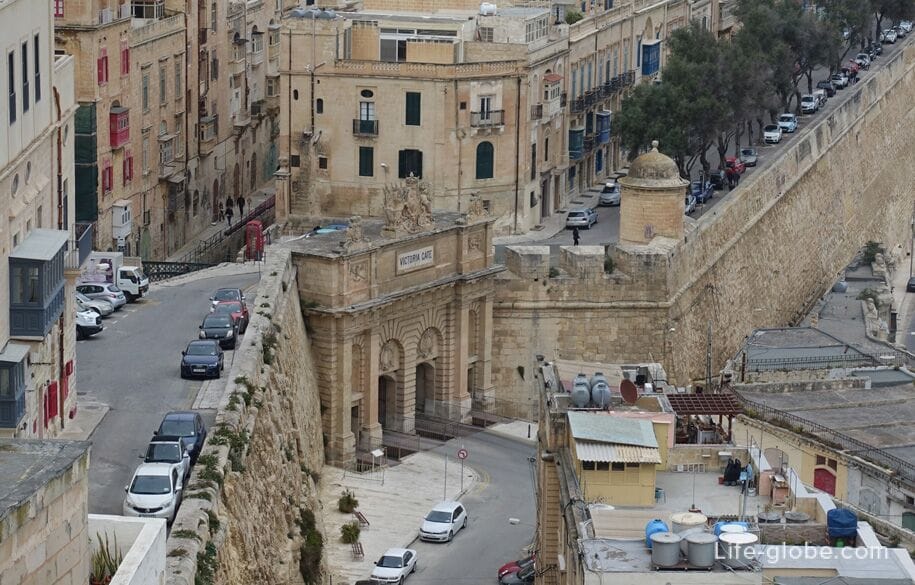
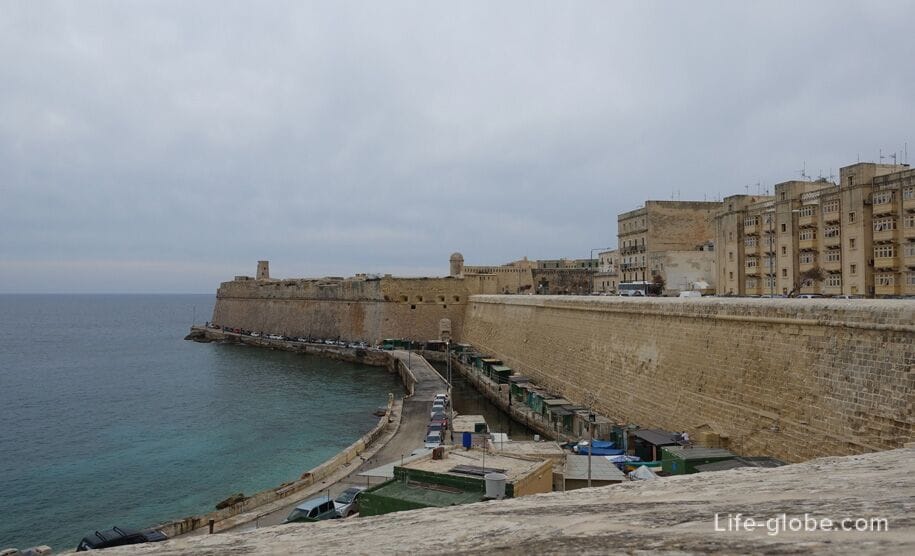
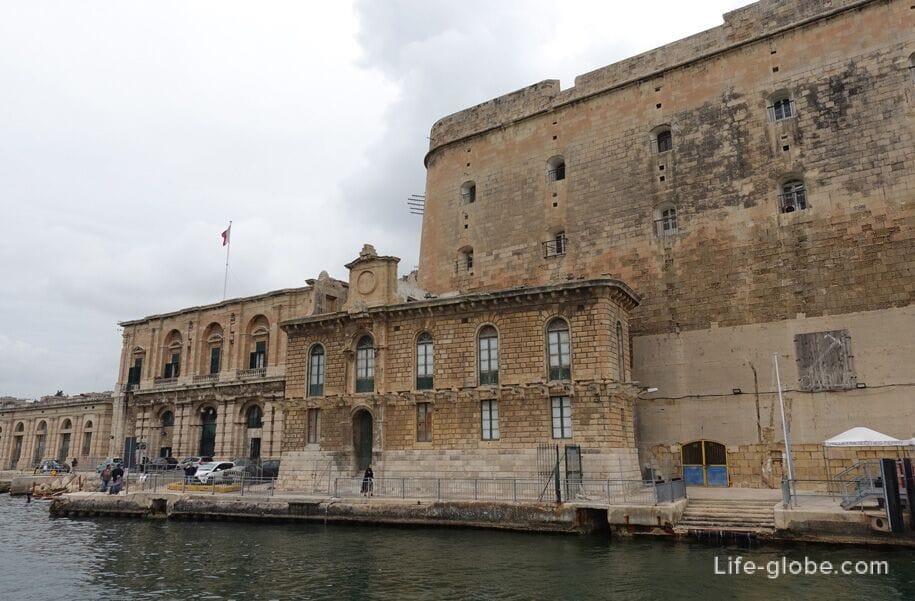
The main defensive structures now include
The City Gate (Bieb il-Belt), which literally means "The Door to the City", is a former gate located at the entrance to Valletta and part of the former city walls (fortifications) of the city.
Now the gates mark the beginning of the main street of the city - Republic Street.
The current gate, which is the fifth, was built between 2011 and 2014 by the Italian architect Renzo Piano. The entrance to the city gate is via a bridge running over a deep moat, which now houses a parking lot and a park area.
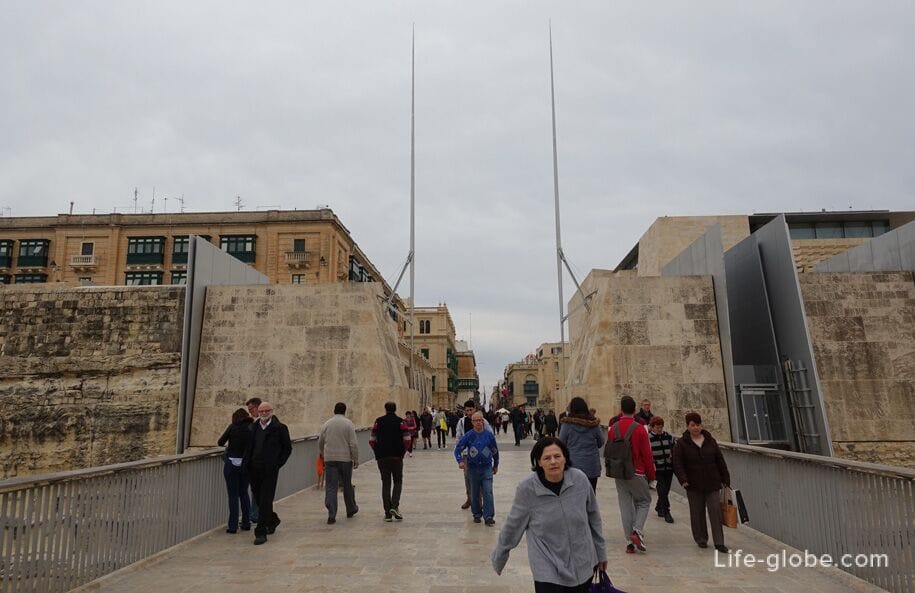
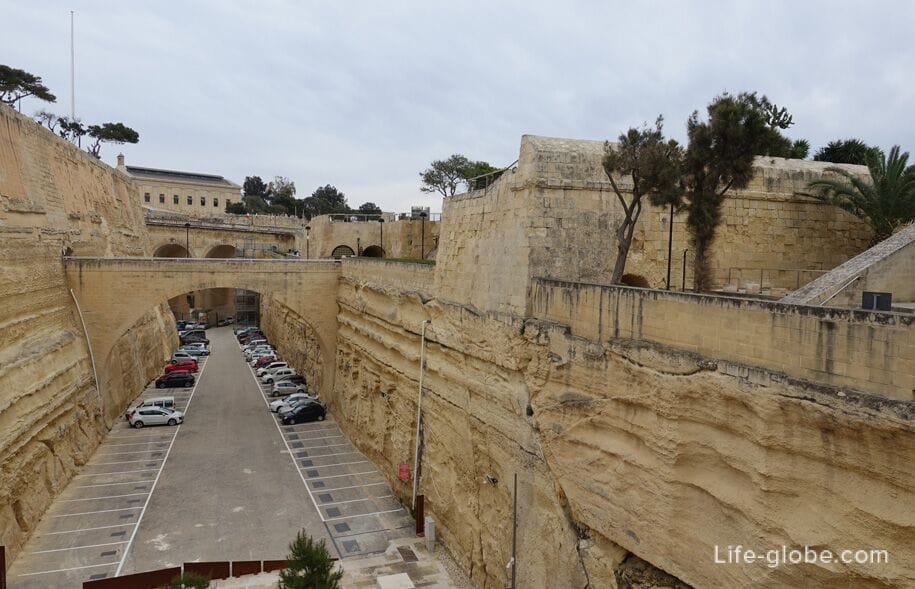
Fort St. Elmo (Fort Sant'Elmo, Forti Sant'Iermu) is a star-shaped fort located on the seashore of the Skiberras Peninsula, which separates the harbor of Marsamxett from the Big Harbor.
The construction of the fort was started in 1552. The fort is best known for its role in the Great Siege of Malta in 1565. During the British rule, the fort was changed.
Today , part of the fort housesThe National Military Museum, which houses artifacts related to the military history of Malta, starting from the Bronze Age and ending with Malta's accession to the European Union in 2004. An important collection of the museum dates back to the Second World War. Museum website: national-war-museum.
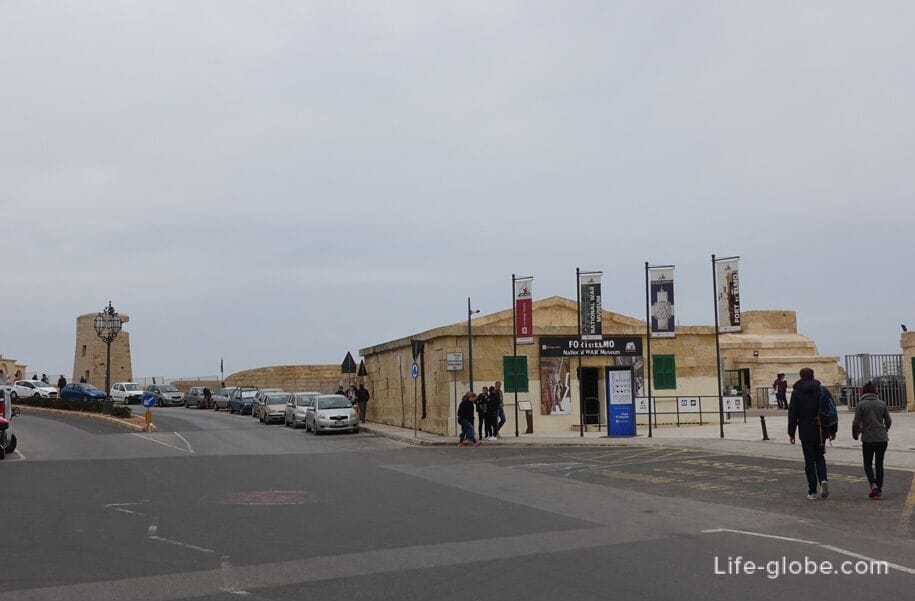

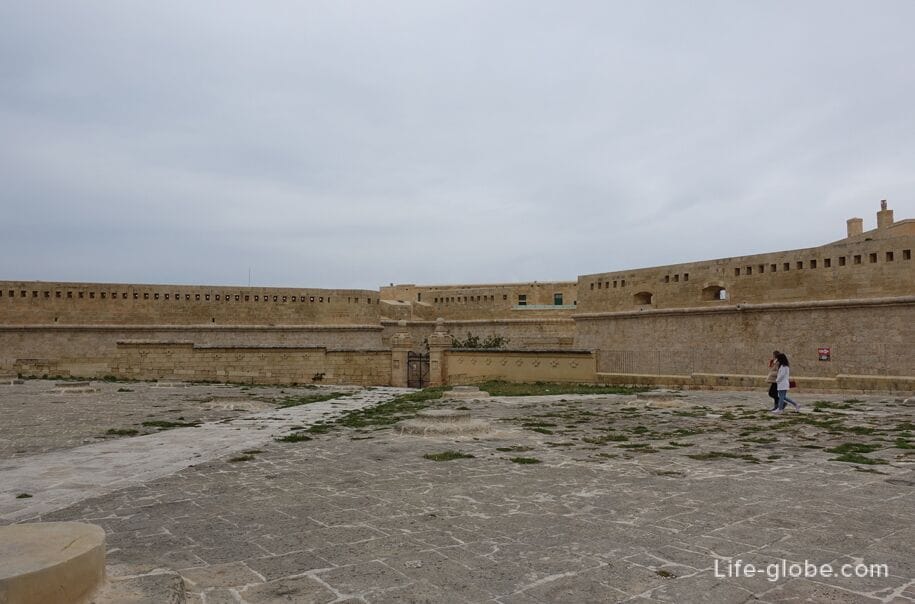
The Victory Bell or World War II Siege Memorial is located on the Bastion of Castile (St. Christopher), the farthest point of Valletta in the Great Harbor.
The memorial erected in memory of the tragedies of the Second World War in Malta - the people who died during the war, was opened by Queen Elizabeth II in 1992 in honor of the fiftieth anniversary of the day when Malta was awarded the George Cross.
The bell rings, as a rule, every day at noon.
The monument offers views of the Mediterranean Sea, Fort Sant'Elmo, breakwater, lighthouse, Fort Ricasoli, part of the coast of Valletta and the surrounding area. More about the memorial...
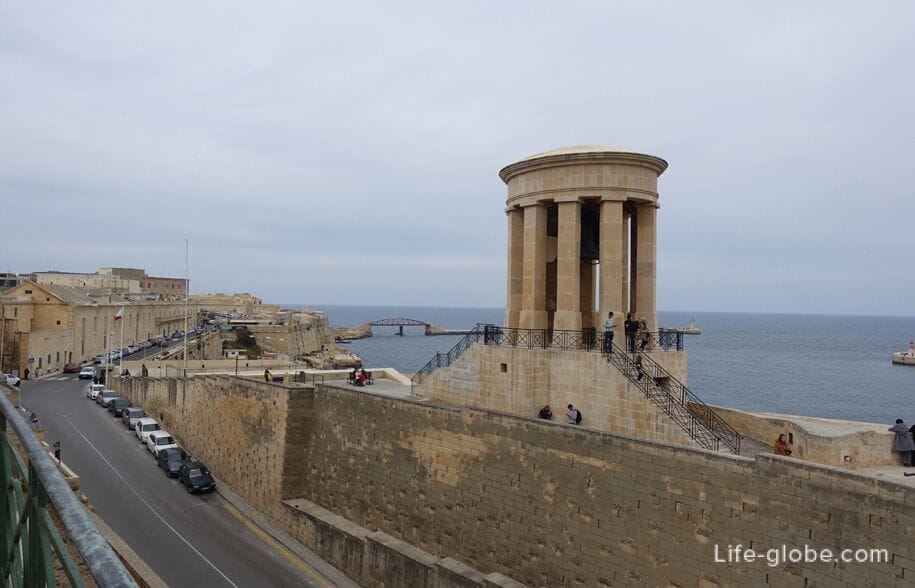
The Gardens of Lower Barrakka (l-Barrakka t'Isfel) is a city park and recreation area built on the bastion of St. Christophe in the 19th century.
The gardens are equipped with alleys for walking, places to relax, there is a small fountain, terraced arches, monuments and statues.
From the terraces of the gardens there are panoramic views of the entrance to the Great Harbor, including the Tri-City of Malta, as well as the Ricasoli Fort, the embankment, the breakwater and part of the Maltese shipyard.
Entrance to the gardens is free (free of charge). More about the gardens of the Lower Barracca...


Victoria Gate (Victoria Cate) is a former city gate built by the British in 1885 and named after Queen Victoria.
The gate was the main entrance to the city from the Big Harbor. It was once the busiest part of the city. The gate is located between Marina Curtein (Curtain) and the bastion of St. Barbara, on the site of the Gate Del Monte of the 16th century.
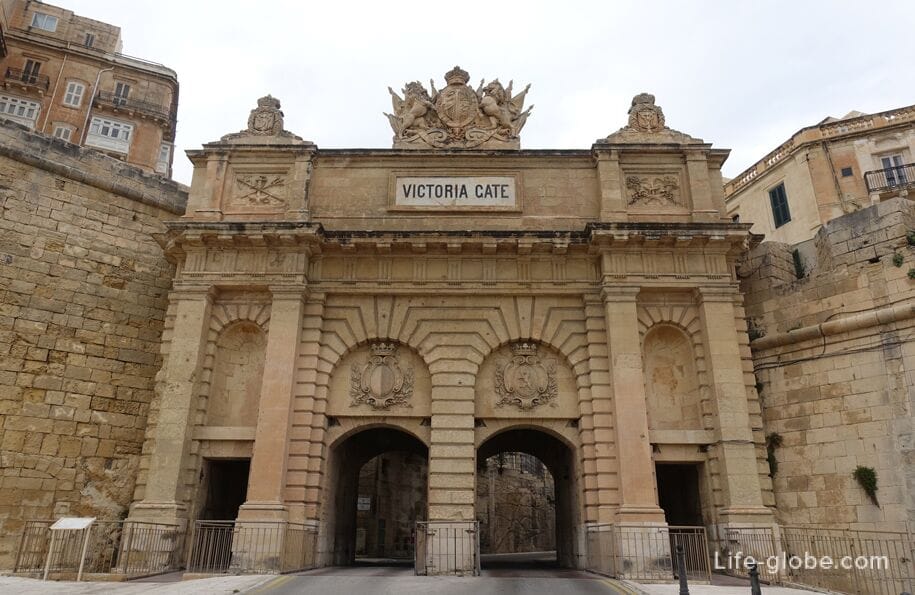
The Upper Barrakka Gardens (Il-Barrakka ta' Fuq) is Valletta's most famous and visited park, located on the upper tier of the bastion of Saints Peter and Paul, built in the 1560s.
The park is equipped with walking paths and places to relax, there is an outdoor cafe and a small fountain. The park is also decorated with terraced arches, monuments and memorials to a number of outstanding people.
The terraces of the gardens offer stunning panoramic views.
Entrance to the gardens is free (free of charge). More about the Upper Barracca Gardens...
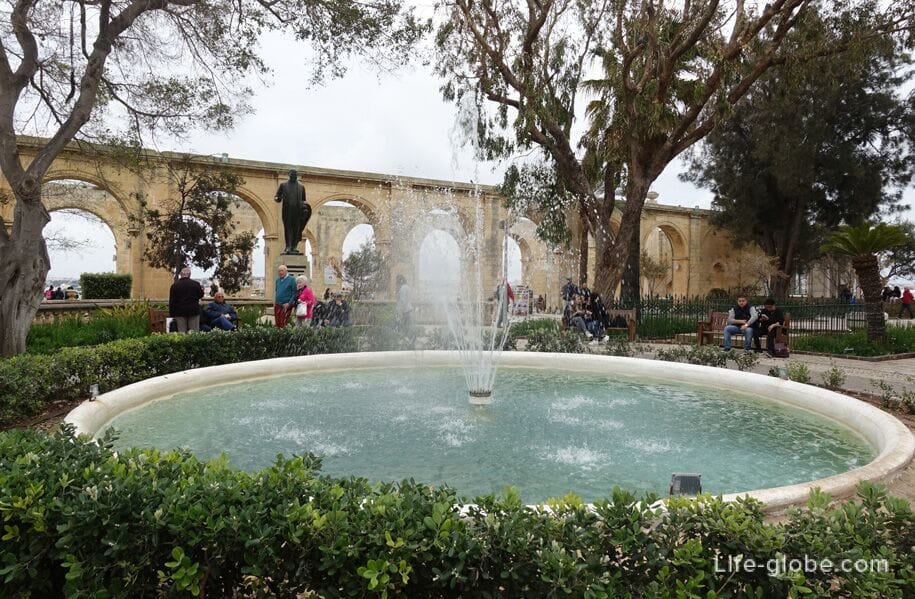
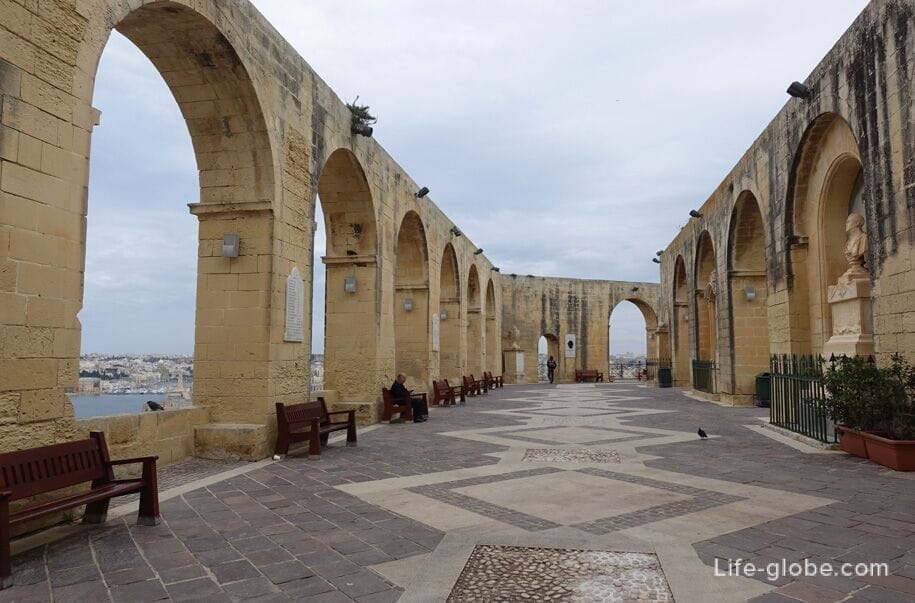
The salute battery (Batterija tas-Salut) is located a level below the upper platform of the Upper Barracca Gardens - under the garden (formerly the lower tier of the Peter and Paul Bastion).
The artillery battery was built in the 16th century by the Order of St. John on or near the site of the Ottoman battery of the Great Siege of Malta.
The battery was used mainly for firing ceremonial cannons and signals, but sometimes it was also used for military purposes, for example, during the blockade of 1798-1800 and the Second World War. The battery remained an active military installation until its weapons were seized by the British in 1954. At the beginning of the 21st century, the battery was restored and opened to the public. After restoration, the battery was initially equipped with eight original 24-pounder Blomefield guns manufactured between 1790 and 1810, but they were later transferred to the museum and replaced in 2011 with working copies of 32-pounder SBBL guns. During the restoration work in 2011, about a hundred stone cannonballs were found at this place.
The guns are currently operational. Firing from a cannon in a salute battery occurs, as a rule, twice a day - at noon and 16:00 hours.
Entrance to the territory of the salute battery is paid. A small exhibition complex is also open. The entrance is from the Upper Barracca Gardens.
Website: salutingbattery.
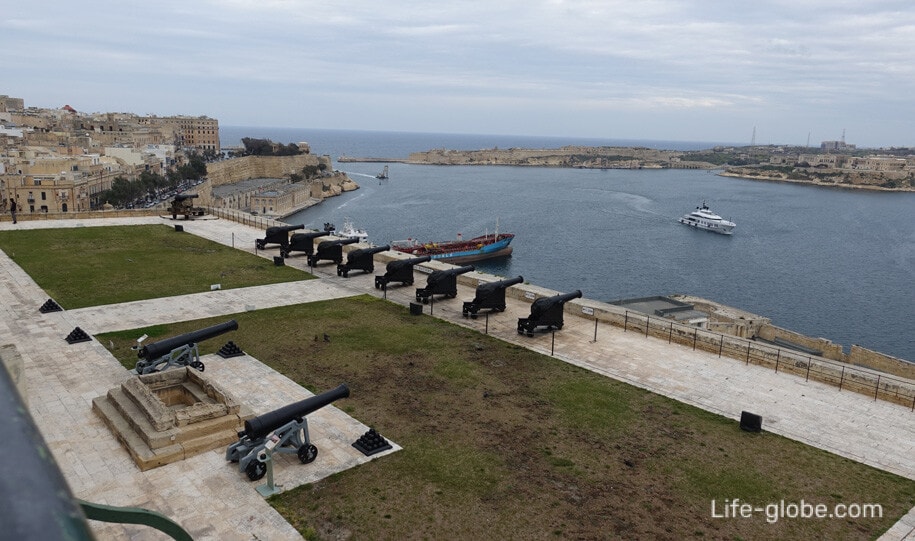
Hastings Gardens (Hastings Garden) are located on top of the bastions of St. John and St. Michael.
Today, the gardens are publicly accessible and they contain: walking paths, places to relax, a fountain, old cannons, a memorial, a khachkar (memorial) and a tomb in honor of Francis, 1st Marquess of Hastings, who was governor of Malta.
The gardens offer impressive panoramic views. More about Hastings Gardens...

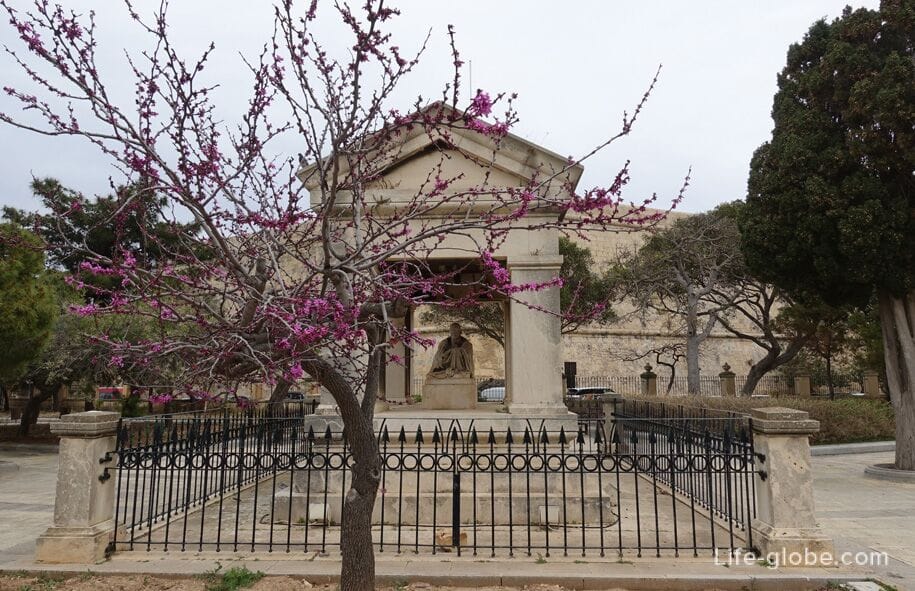
The Center for the Interpretation of Fortifications - "Fortress Builders" (Fortress Builders - Fortification Interpretation Centre) is a museum and center for the fortifications of Valletta, located in a warehouse of the late 16th century.
It is a cross between a museum, an information center and a resource center where you can find information about fortifications in Malta.
Entrance to the center is free (free of charge). Learn more about the Interpretation fortification center...
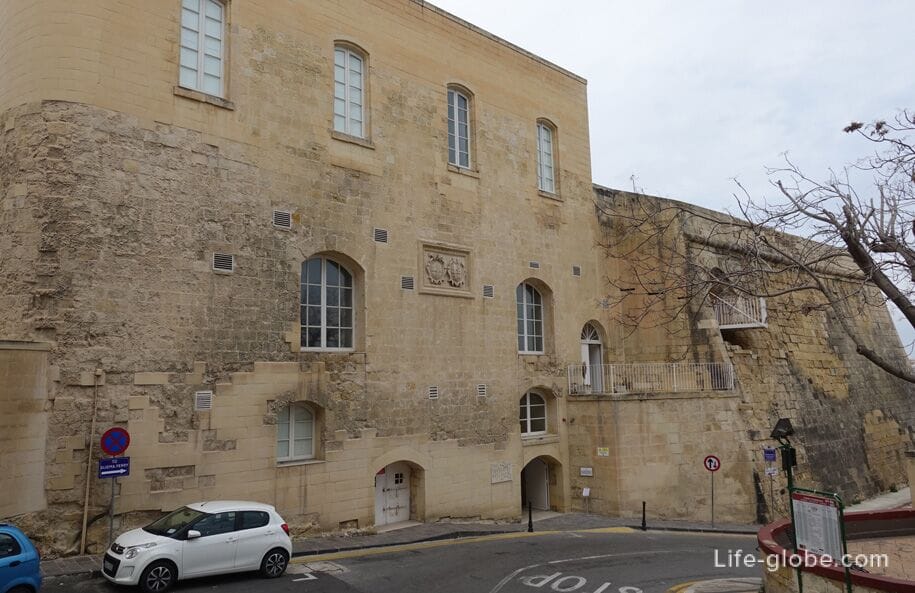
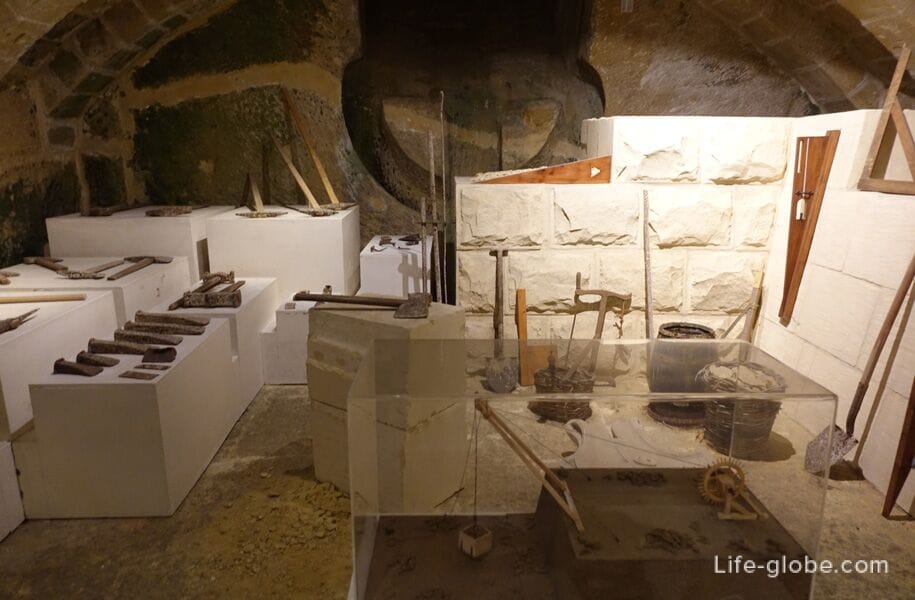
All the streets of Valletta run parallel to each other, forming a grid.
Buildings, including historical palaces and churches, stand in dense rows along the streets. Some of the buildings today contain museums, shops, cafes, bars, restaurants and accommodation facilities (hotels, apartments)
The architecture of the buildings along the streets is diverse. Many buildings vary from the Baroque of the mid-16th century, to modernism and modernity.
In the exteriors of buildings, multicolored "Maltese" balconies especially attract attention, which protrude and sometimes hang over the heads of people strolling through the streets of the city. Maltese Catholic roots can also be seen on many corners of buildings with niches dedicated to saints.

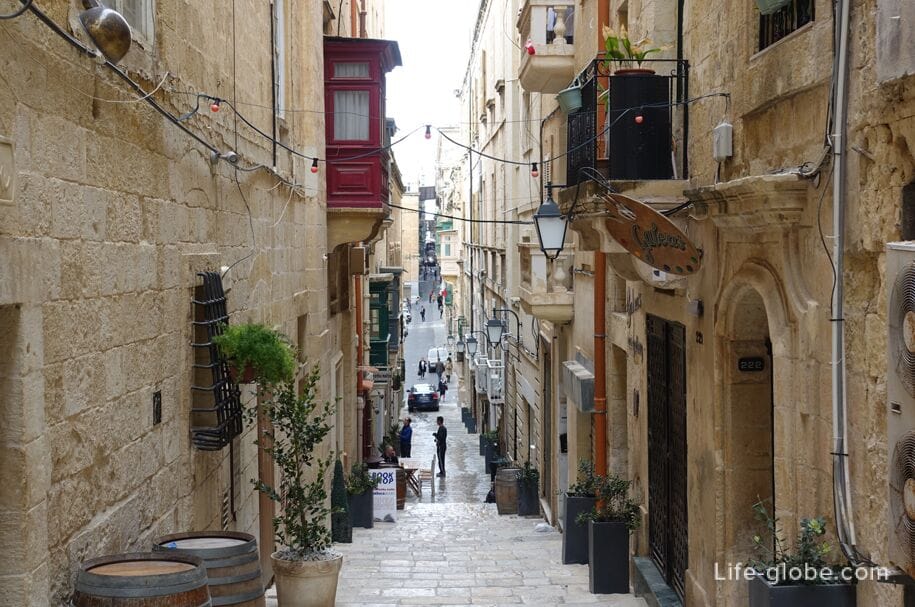
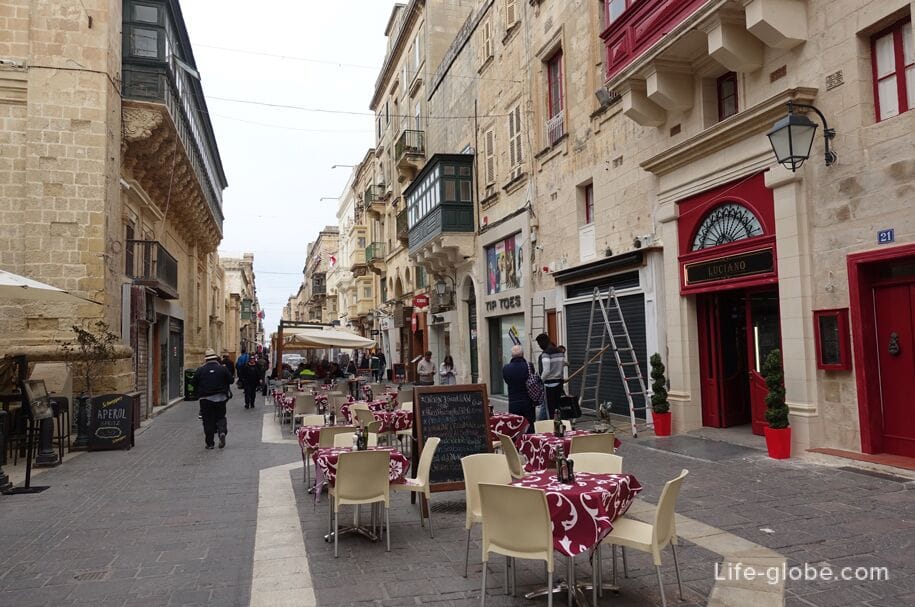
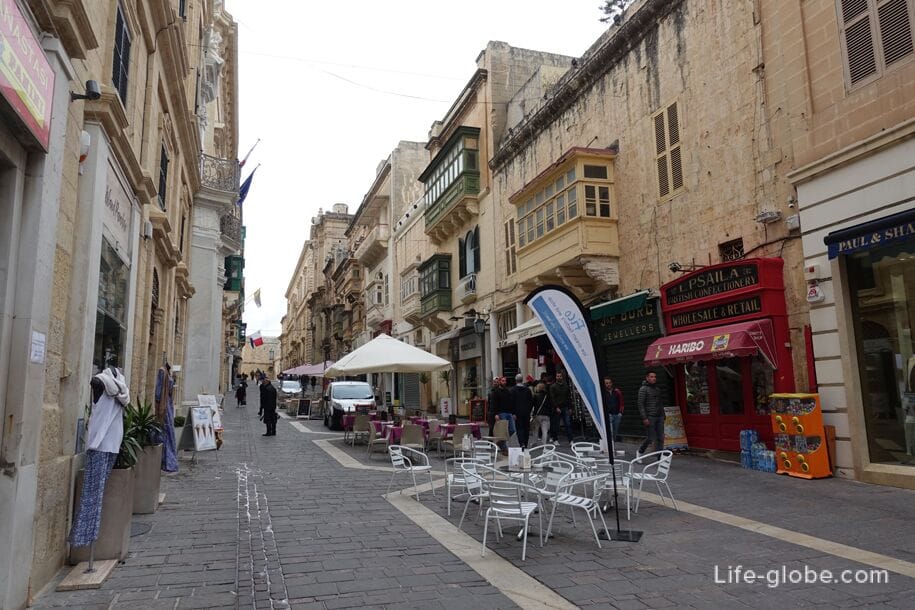

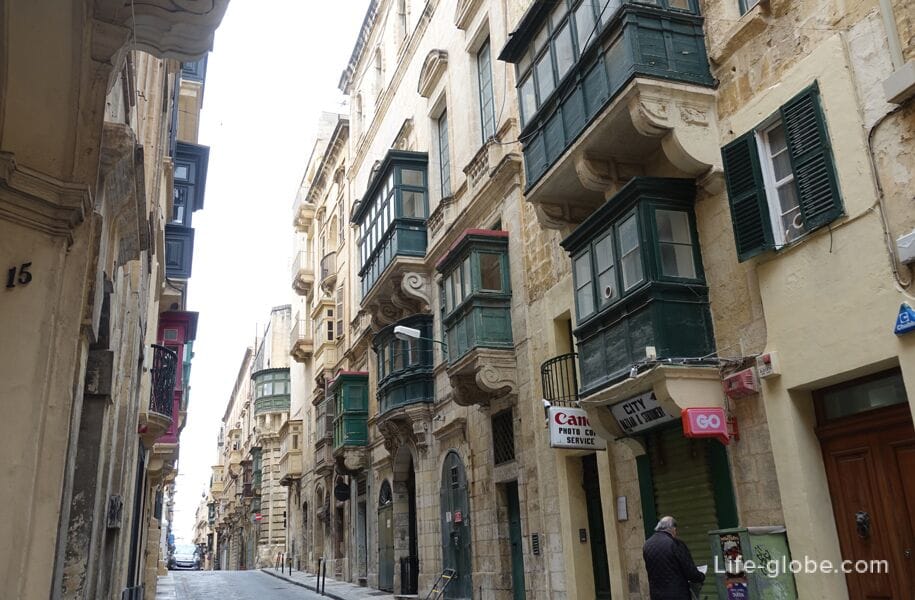

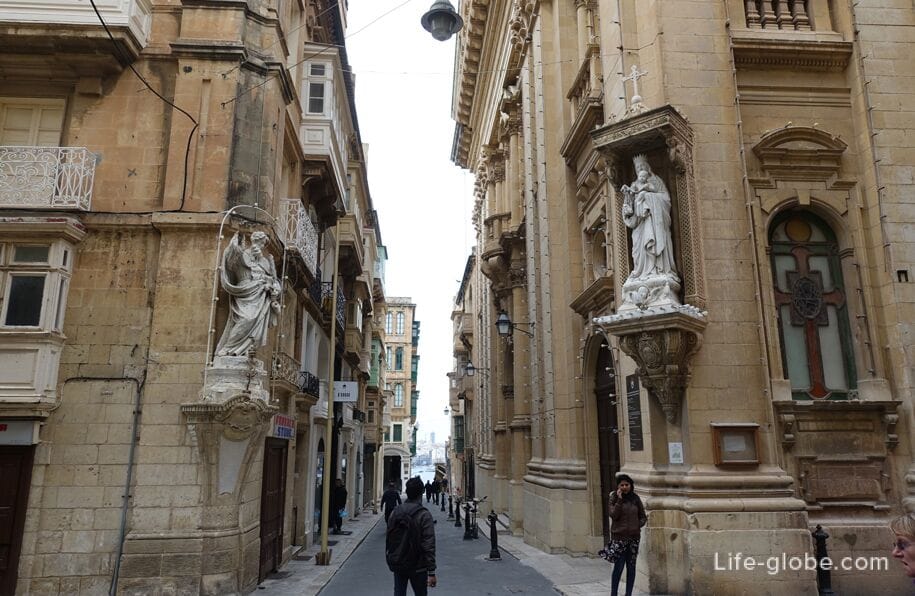
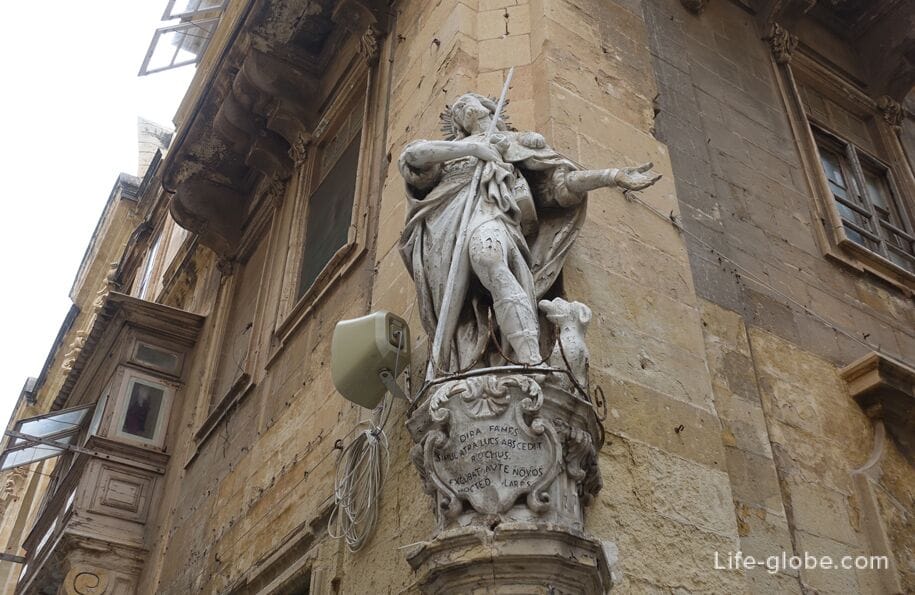
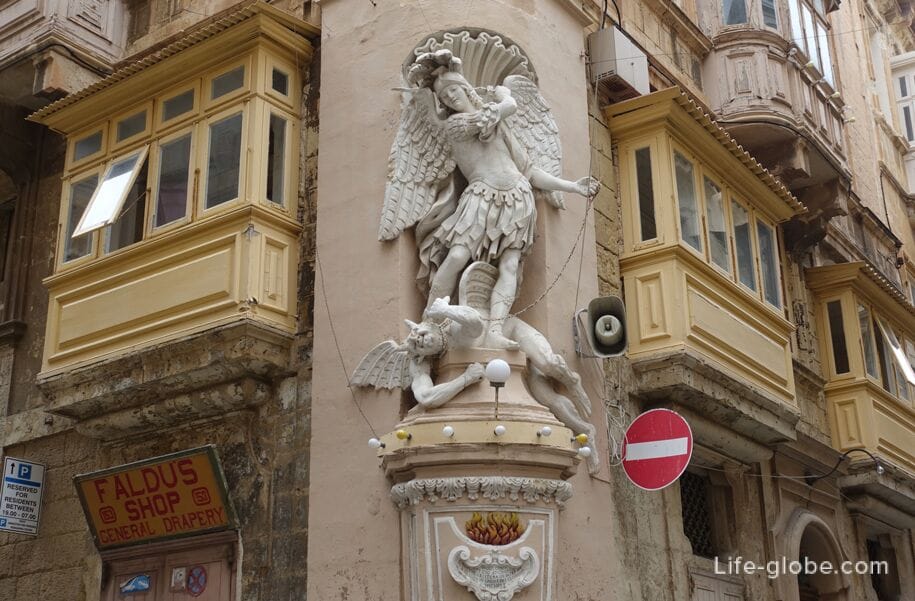
The main artery of Valletta is Republic Street (Triq Ir-Repubblika, formerly Kingsway), which divides the city exactly in half along its entire length.
Republic Street is one of the widest and busiest streets in the city, stretching from the City Gate to Fort Sant'elma (sea line). The length of the street is approximately 900 meters.
Along the street there are historical buildings, including churches and palaces,The National Archaeological Museum, located in the Baroque palace, as well as squares, shops, cafes and restaurants. More about Republic Street...
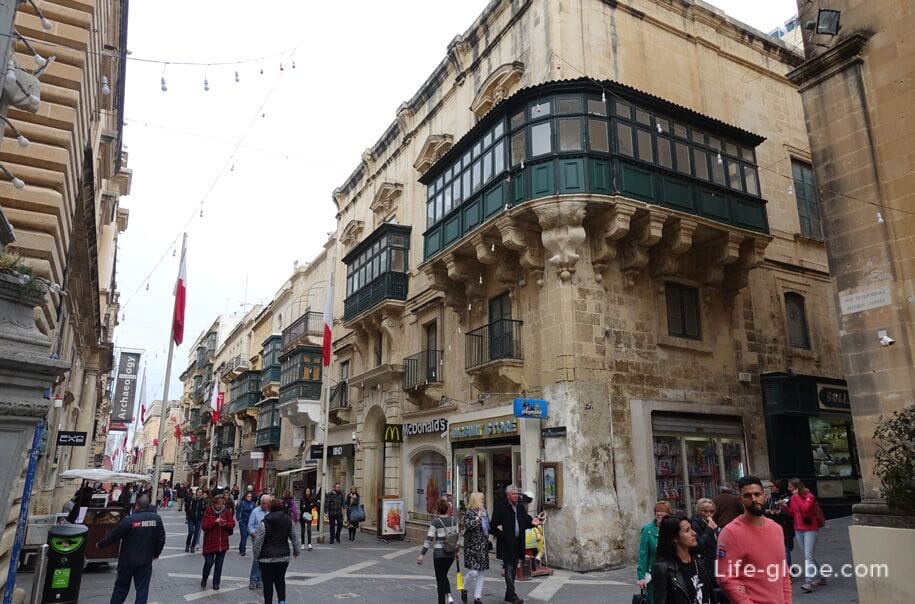
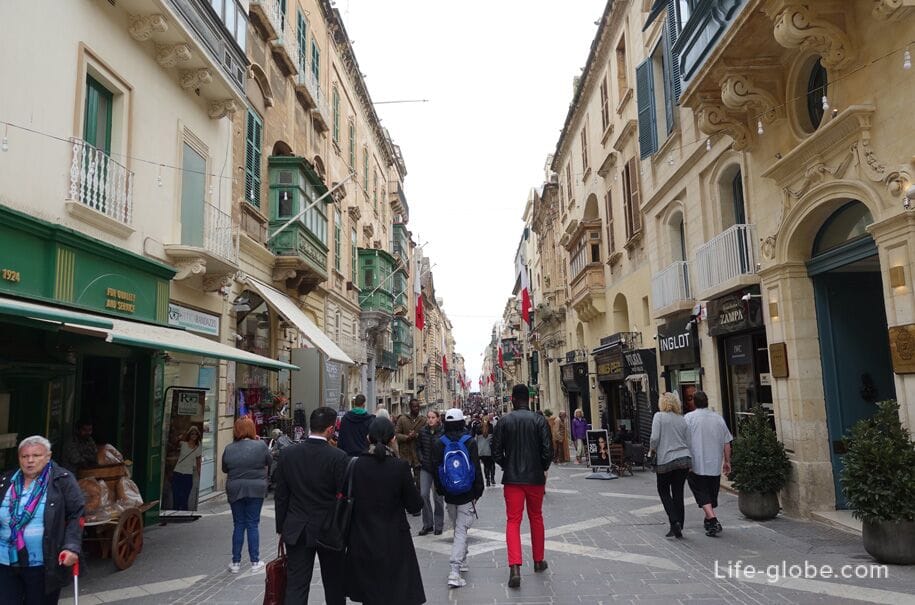
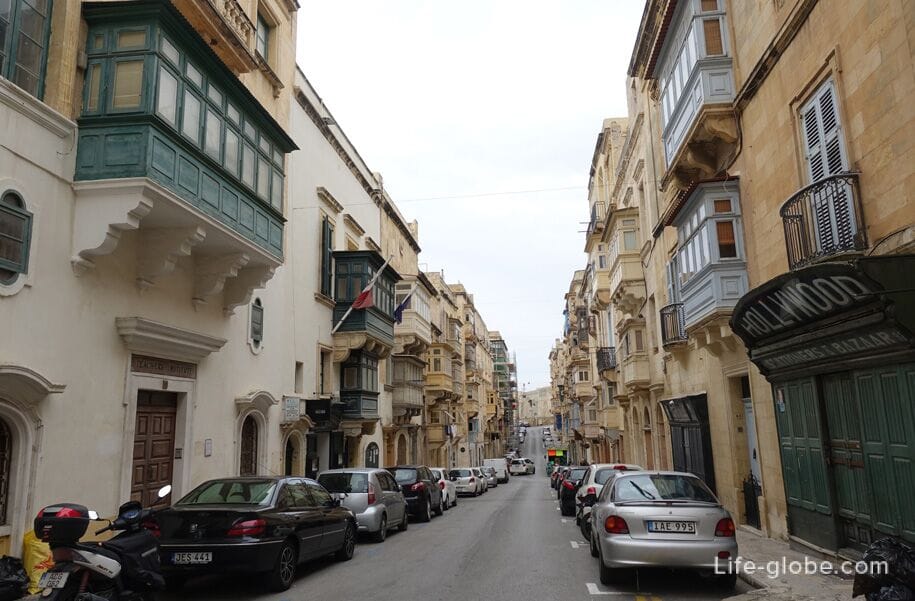
The main squares of Valletta are: Freedom square (Misrah IL-Ħelsien), Castille Square, St. John's Square (Pjazza San Ġwann), Great Siege Square and the biggest square of the city - St. George's square or Palace Square.
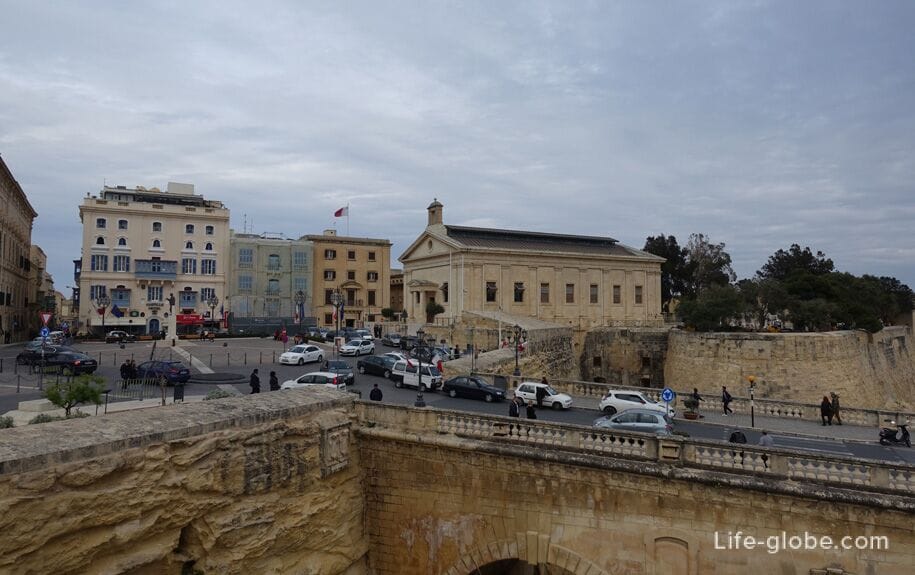
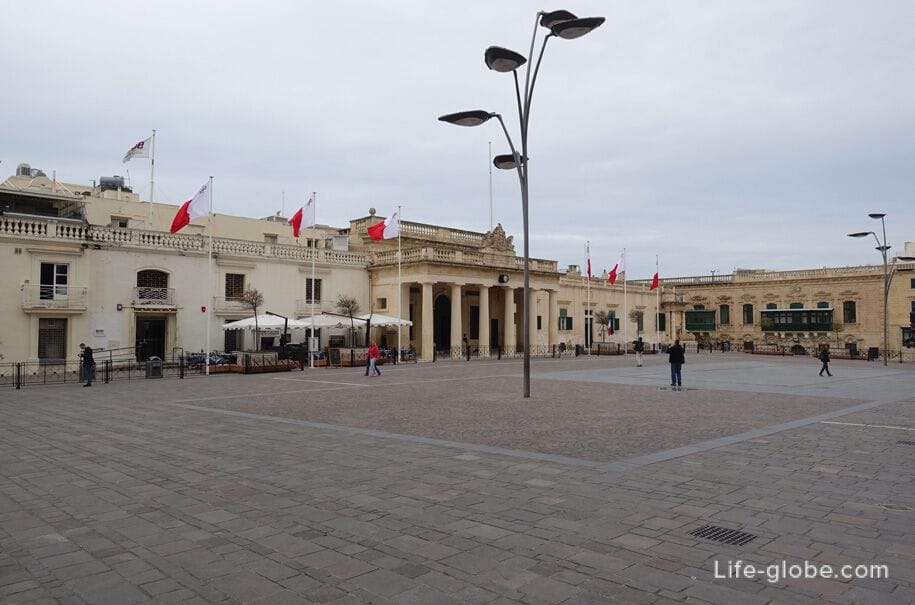

On Republic Square there is the legendary cafe-coffee house "Caffe Cordina", whose history dates back to the founding of the Cordina family in 1837 of a small shop in Bormla, which began to specialize in baking and cooking traditional Maltese sweet delicacies. In 1944, the late citizen Cesare Cordina, the forefather of the current family, moved the coffee shop to Valletta. Over the years, the family expanded the establishment, resulting in a cafe that can still be visited today, with tea rooms, a pasticeria, a cafe-bar and a gelateria.
Website: caffecordina.
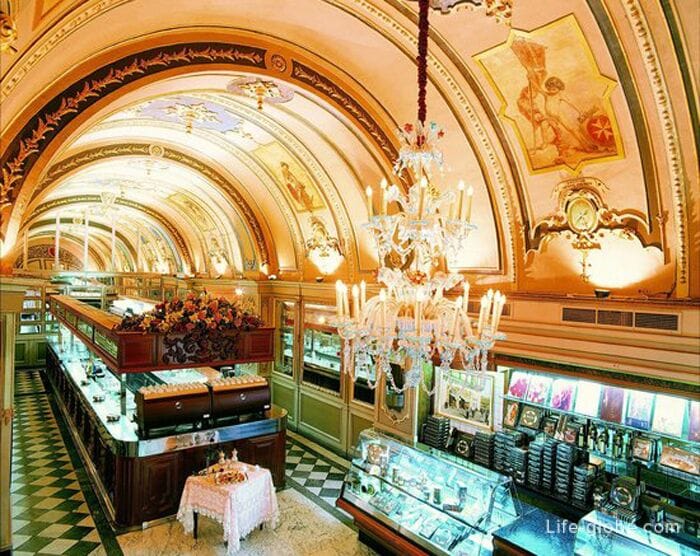
In addition to the above, the main attractions and museums of Valletta include
The Triton Fountain (Il-Funtana tat-Tritoni) is the largest and perhaps the most recognizable fountain of the island of Malta, located on the periphery of the city gate in Valletta, almost on the border with the city of Floriana.
The fountain was designed and erected between 1952 and 1959 by Maltese sculptor Chevalier Vincent Apap and Maltese designer Victor Anastasi.
The fountain consists of three large bronze figures of mythological newts holding a dish from which jets of water are beating, resembling an airy two-tiered cake. The tritons are positioned so that the face of each of them can be seen from the side of the Valletta city gate. The tritons themselves are located on a large round bowl of the fountain, into which, from the lower bowl, water jets beat. More about the Triton Fountain...
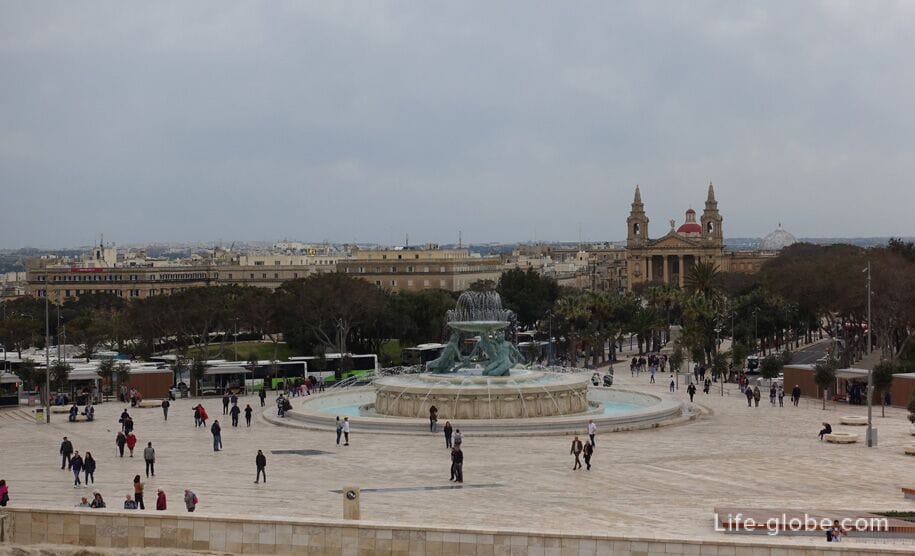
The Royal Opera House (It-Teatru Rjal) was erected in 1866 and was one of the most beautiful and iconic buildings in Valletta.
The theater received a direct hit from an aerial bombing in 1942 during World War II. After several abandoned plans to rebuild the theater, the ruins were redesigned by the Italian architect Renzo Piano, and in 2013 the theater began functioning again as an open-air concert hall (Pjazza Teatru Rjal).
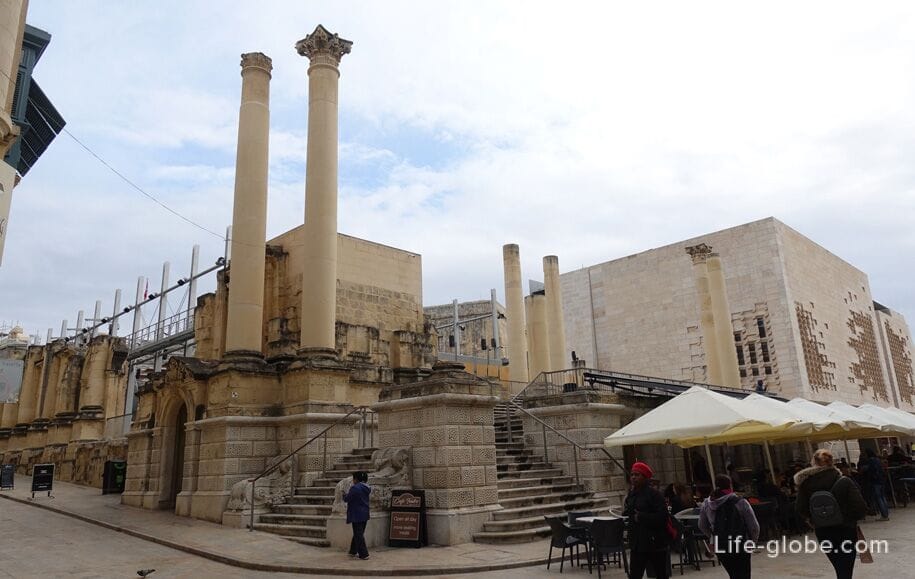
The Ferreria Palace (Palazzo Buttiġieġ-Francia) in the style of Italian classics was built at the end of the 19th century by architect Giuseppe Bonavia. It was the first building that introduced the fashion for the famous wooden balconies on the facades of houses on the islands of Malta.
The building still stands out among the surrounding buildings today.
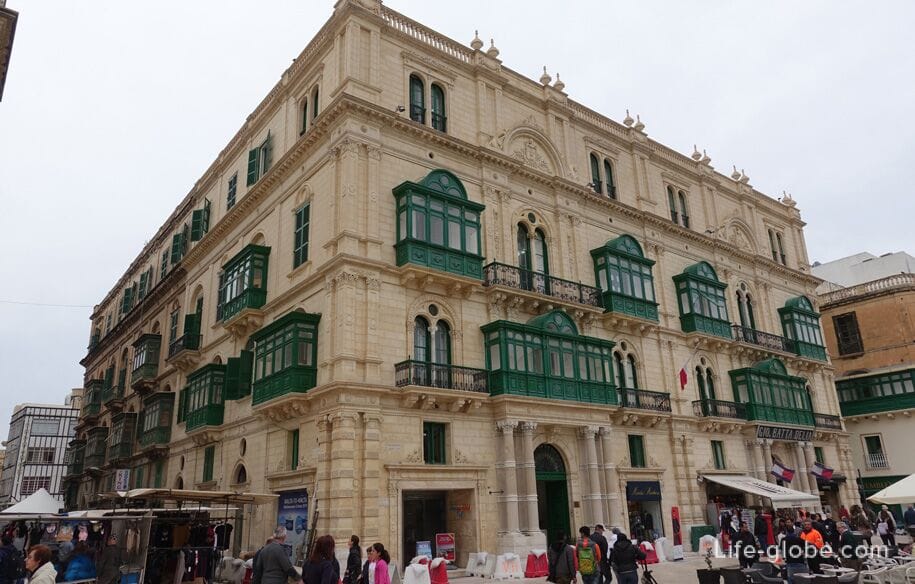
The Mediterranean Conference Center (Dar il-Mediterraneangall-Konferenzi) is located in a building built as a hospital in the 16th century. It was one of the leading hospitals in Europe until the 18th century, and it was used until 1920.
Currently, the building is used as a museum, as well as for banquets, exhibitions, international conventions and theatrical performances.
Website: mcc.com .
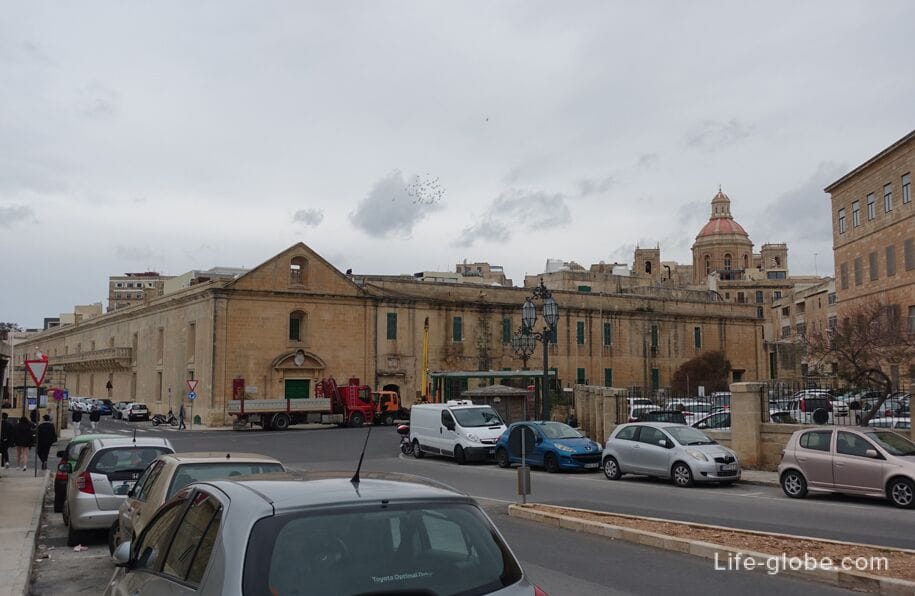
The Castile Hotel (Auberge de Castille) is the main decoration of the Castile Square.
The original building was built in the 1570s as the home of the Knights of the Order of St. John. The current building dates back to the 1740s, when it was completely rebuilt during the magistracy of Manuel Pinto da Fonseca. The new building was built in the Baroque style with a rectangular layout and a central courtyard. The house was named "The Best building in Malta".
Now the office of the Prime Minister of Malta is located in the walls of the building.
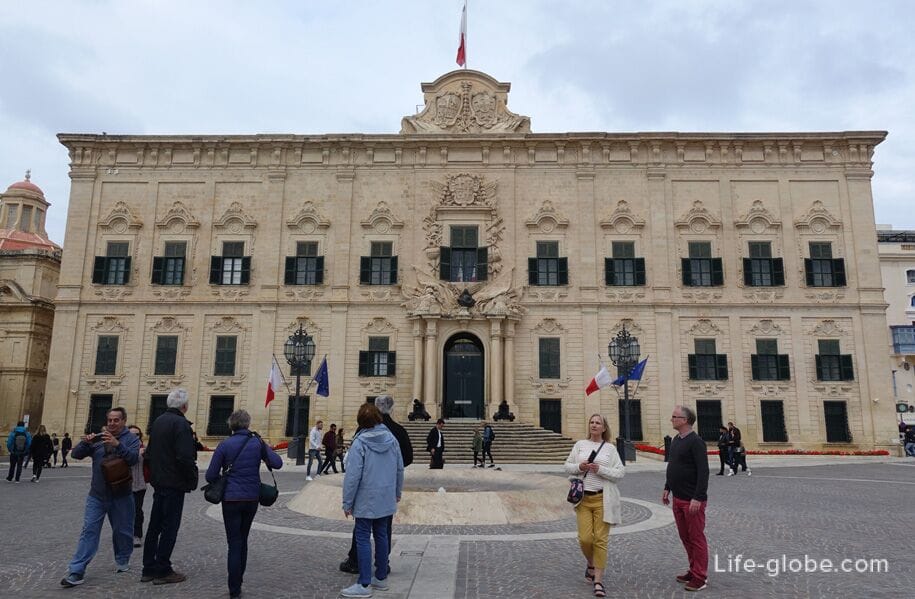
The Malta Stock Exchange building (Malta Stock Exchange / Borża ta' Malta) was originally known as Casino della Borsa and is the Malta Stock Exchange.
The exchange was established with the adoption of the Malta Stock Exchange Act in 1990 and began trading operations on January 8, 1992. In 1999, the exchange moved to the building of the former garrison chapel on Castile Square.
This religious building was built in 1857 and was used as a multi-confessional church until 1950.
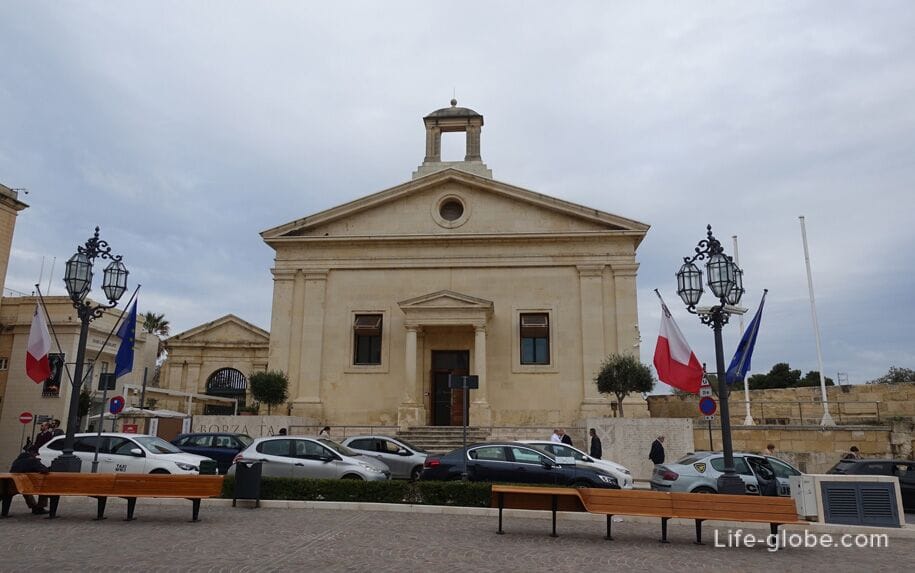
The Museum of Fine Arts (MUŻA) holds collections of works by Maltese and foreign artists, mainly representing the main European art styles.
The museum is located in the historic Auberge d'Italie (Berġa tal-Italja), built in the 16th century as the home of the Knights of the Order of St. John. Subsequently, the building underwent restorations, which gave it a Baroque style. You can also visit the courtyard in the building.
Museum website: muza-national-community-art-museum.

The Grandmasters' Palace, officially known simply as the Palace (Il-Palazz tal-Granmastru), was built between the 16th and 18th centuries as the palace of the Grand Master of the Order of St. John.
The building currently houses the Office of the President of Malta. Parts of the building, namely the palace halls and the armory, are open to the public as museums.
The Armory of the palace (L-Armerija tal-Palazz) is located at the back of the palace and is a museum with a collection of weapons and armor.
Website of the Palace Halls Museum: the-palace-state-rooms.
Website of the Palace Armory Museum: the-palace-armoury.
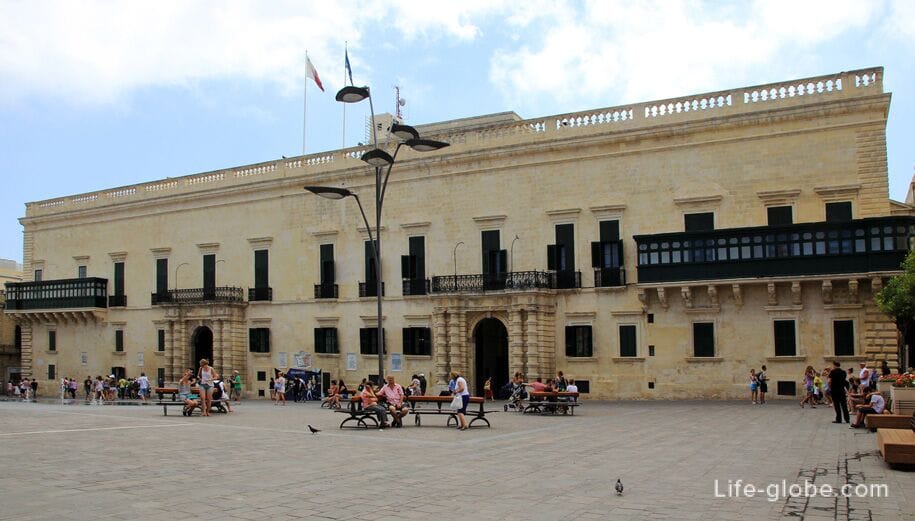
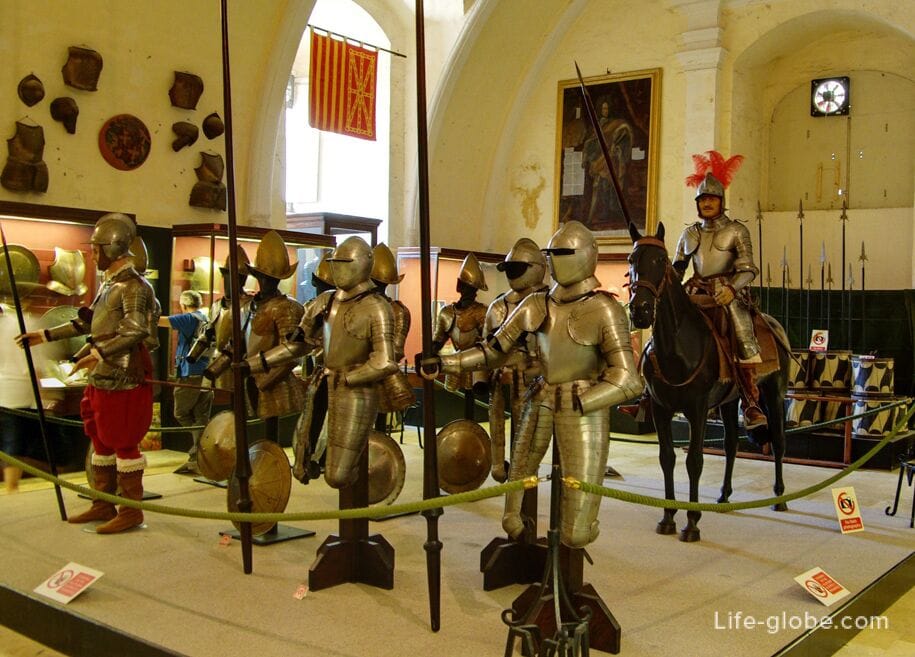

The Main Guard building was originally built as a guard post in 1603 by order of St. John.
In 1814, a neoclassical portico was added, as well as the British coat of arms and a commemorative inscription, installed later - over the portico.
The building currently houses the office of the Attorney General.
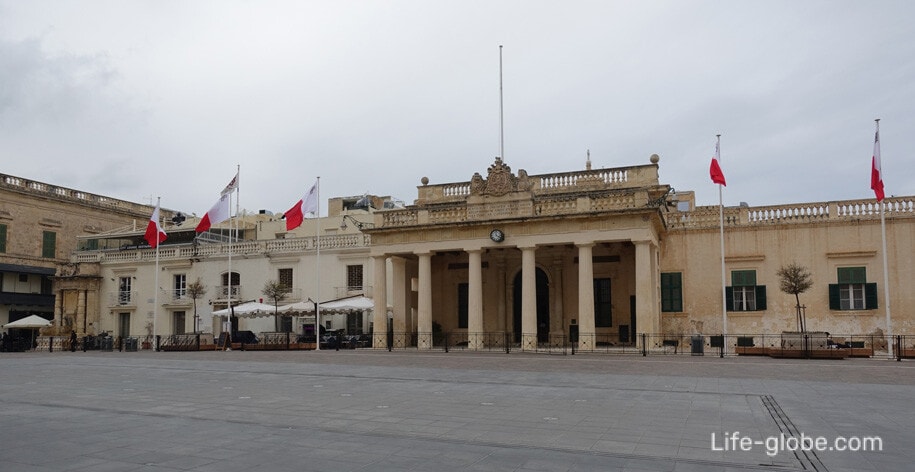
Casa Rossa Piccola is a 16th-century palace, the home of the noble de Piro family.
The building was built in 1580, in an era when the Knights of the Order of St. John decided to build a prestigious city to compete with other European capitals such as Paris and Venice.
Casa Rossa Piccola was one of two houses built in Valletta by Admiral Don Pietro la Rocca. On maps of that time, the palace is referred to as "la casa con giardino", which means "house with a garden", since usually houses in Valletta did not have gardens.
Changes to the house were made at the end of the 18th century, in order to divide the building into two small houses. Further changes were made in 1918, and bomb shelters were added before the Second World War.
Today the palace can be visited. The house has 50 rooms, a bomb shelter from the Second World War and is furnished with collections of furniture, silver and paintings from Malta and Europe.
Also within the walls of the palace are private collections of antique costumes of Malta and Maltese lace.
Website: casaroccapiccola.
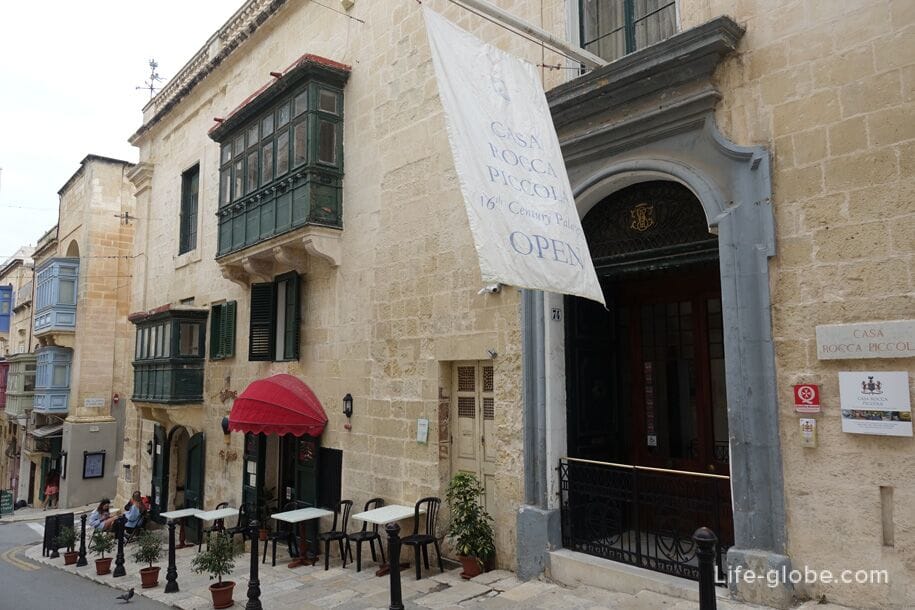
Learn more about the sights of Valletta, Malta...
Valletta has 28 churches, from small chapels to large and massive temples, some of which are open to visitors during the day.
The earliest of the shrines was built in honor of the Victory of the Mother of God in 1566 and is dedicated to the victory of the Knights of Malta over the Ottoman Empire.
The highest visible church in the city is St. Paul's Cathedral (Il-Pro-Katridral ta' San Pawl), officially the Pro-Cathedral and Cathedral Church of St. Paul - Anglican pro-cathedral, located on Independence Square in Valletta, near the coast of the harbor of Marsamshett.
The church was built in the neoclassical style between 1839 and 1844, by architect William Scamp, commissioned by Queen Adelaide, widow of King William the Fourth and aunt of Queen Victoria.
During its history, the cathedral was expanded and restored several times. In 2005, the temple was restored and modernized.
The cathedral is built of Maltese limestone, its internal dimensions are 33.5 x 20.4 meters. The height of the tower-spire of the north-western corner of the cathedral exceeds 60 meters. It is this spire that is the famous landmark of Valletta, which is clearly visible from the city of Sliema. More about St. Paul's Cathedral...
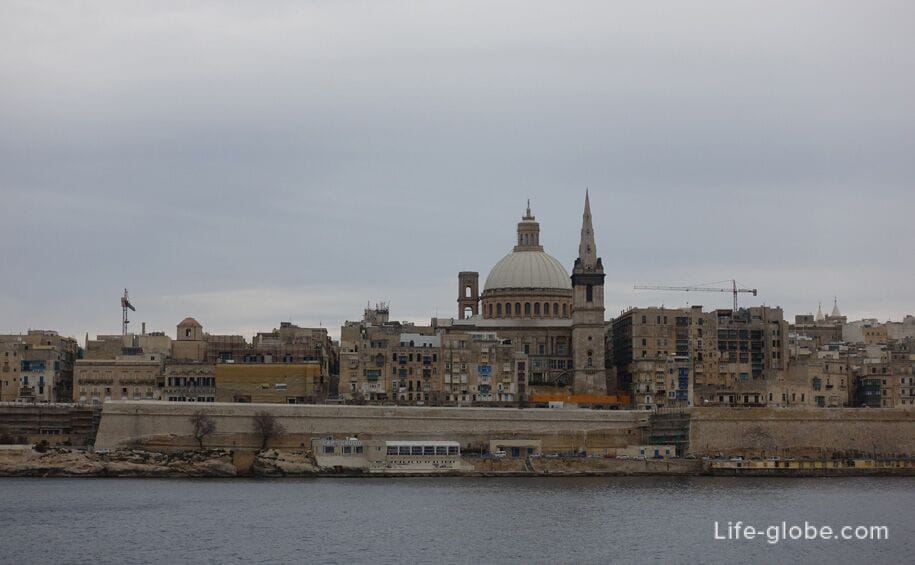
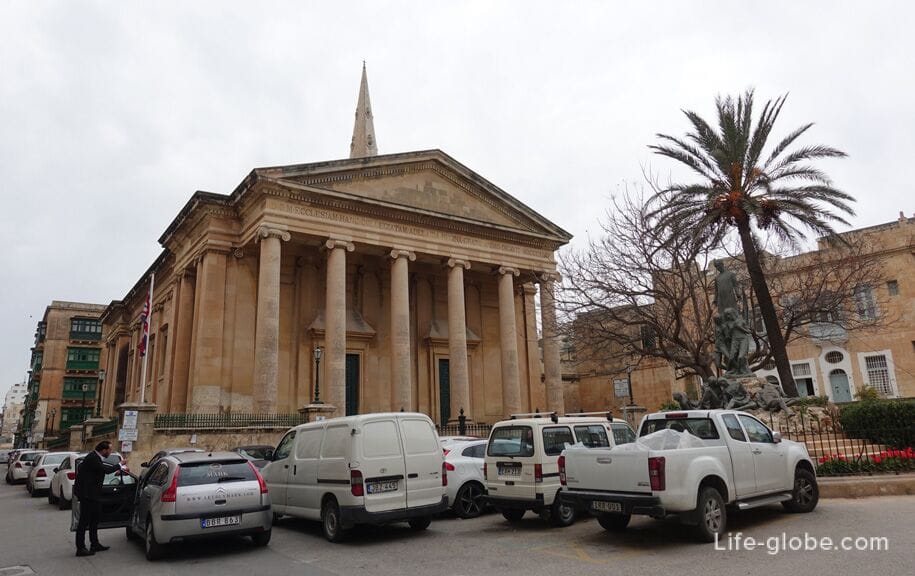
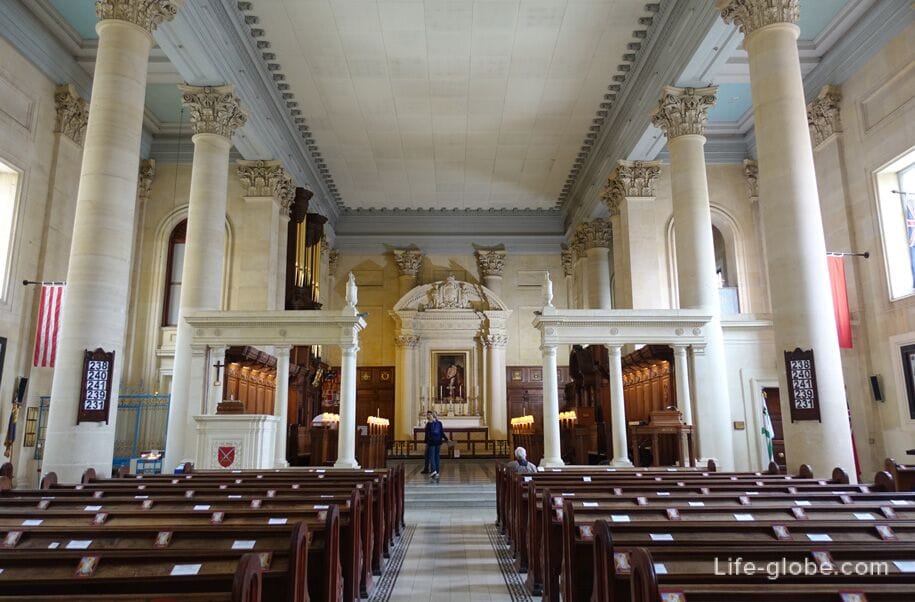
The most visited church in Valletta is the Roman Catholic Cathedral of St. John, also known as La Valletta (Kon-Katidral ta' San 'wann) and dedicated to St. John the Baptist.
The cathedral was built by the Order of St. John between 1572 and 1577 by order of Grand Master Jean de la Cassiere as the monastery Church of St. John (Knisja Konventwali ta 'San aliwann).
In the 17th century, the interior of the cathedral was restored in the Baroque style by Mattia Preti and other artists. Currently, the interior of the cathedral is considered one of the best examples of high Baroque architecture in Europe.
The main facade of the cathedral faces St. John's Square, and the entrance to the cathedral is from the Great Siege Square on Republic Street.
Entrance to the cathedral is paid. Cathedral website: stjohnscocathedral. More about the square and the cathedral...

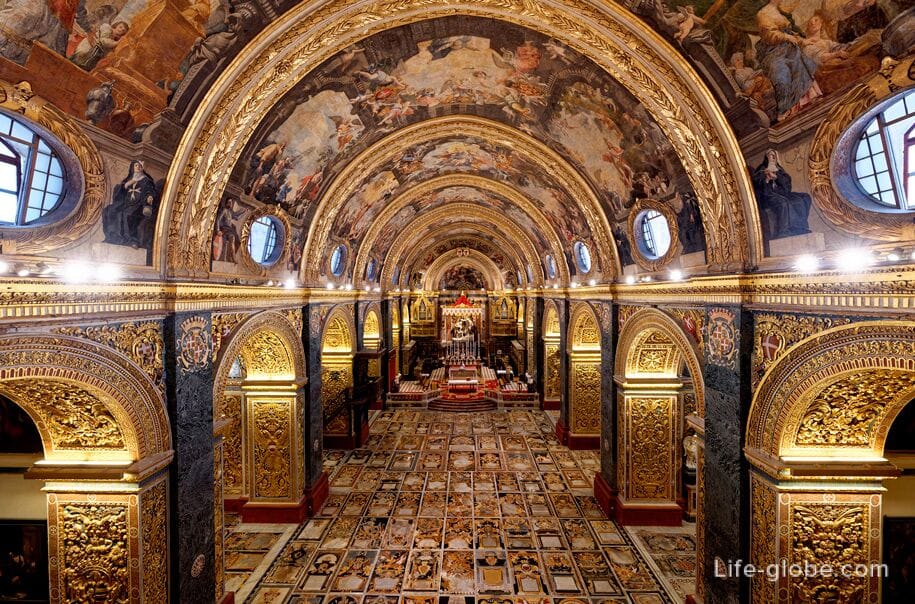
Another major shrine in the city is the Collegiate Parish Church of the Shipwreck of St. Paul, also known simply as the Church of the Shipwreck of St. Paul (Collegiate Parish Church of St. Paul's Shipwreck) is a Roman Catholic parish church, which is one of the oldest in Valletta.
The Holy Apostle Paul is considered the spiritual father of the Maltese. His shipwreck in Malta is described in the New Testament (Acts 28, 1). St. Luke wrote: "We discovered that the island is called Melita."
The history of the church dates back to the 1570s. It was designed by Girolamo Cassar and completed in December 1582. The church was handed over to the Jesuit Fathers, and a new church was opened in 1639. The facade of the church was rebuilt in 1885 according to the project of Nikola Zammit.
The church houses works of art, including an altar by Matteo Perez d'Aleccio, paintings by Attilio Palombi and Giuseppe Cali. The wooden titular statue of St. Paul was carved in 1659 by Melchiorre Kafa, brother of Lorenzo Gafa, who designed the dome. The statue is paraded through the streets of Valletta on the day of the shipwreck of St. Paul (February 10). Also in the church you can see a relic of the right wrist of St. Paul and part of the column of San Paolo alley Tre Fontane, on which the saint was beheaded in Rome.

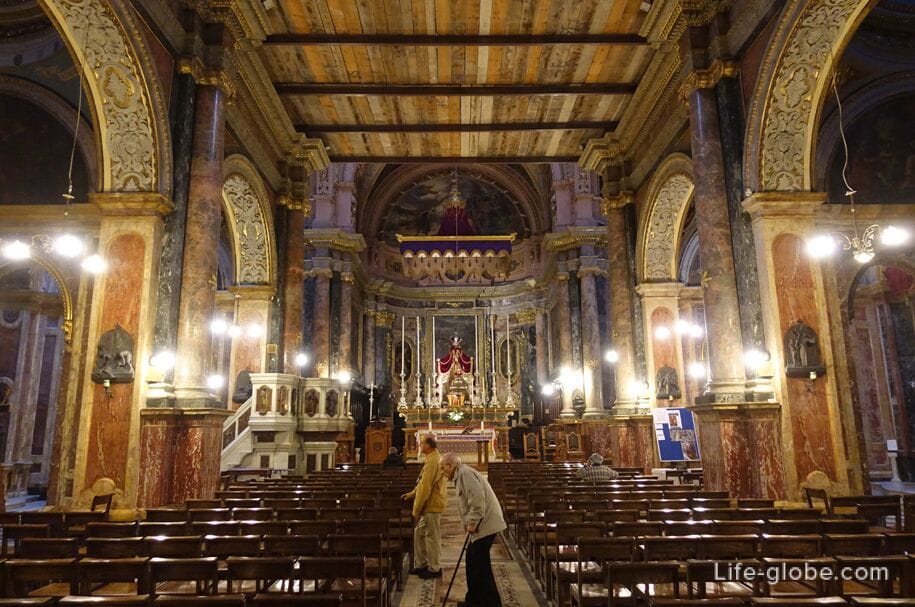
The Manoel Theatre (It-Teatru Manoel) was named after the Grand Master of the Knights Hospitaller Fra Antonio Manuel de Vilaine, who commissioned its construction in 1731.
The theater is considered the national theater of the country and the home of the Maltese Philharmonic Orchestra (Orkestra Filarmonika Nazzjonali).
The theater is a small space with 623 seats and an oval hall, three tiers of boxes built entirely of wood, with gilding and a pale blue ceiling that resembles a dome.
The theater building itself is an architectural monument of the 1st degree.
Theater website: teatrumanoel.
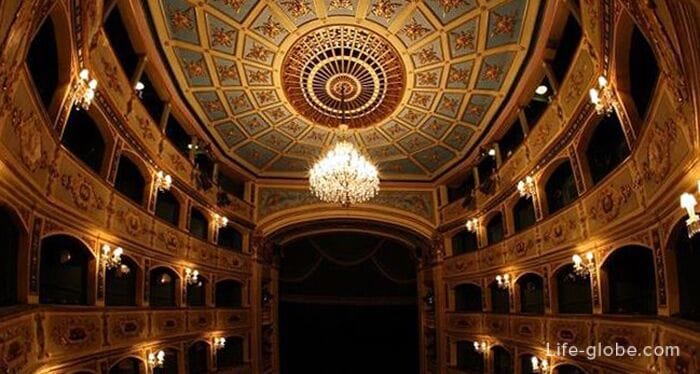
The island of Malta, and the whole country consisting of several islands, is small, so from Valletta you can easily get to any end of the island, as well as visit the neighboring islands of Gozo and Comino. You can swim or fly to Sicily (Italy).
Near Valletta, you can visit the neighboring town of Floriana, as well as Slima, Gzira with the island of Manoel, Three Cities of Malta or the city of St. Julian's, which is a developed resort and a popular tourist destination in Malta.
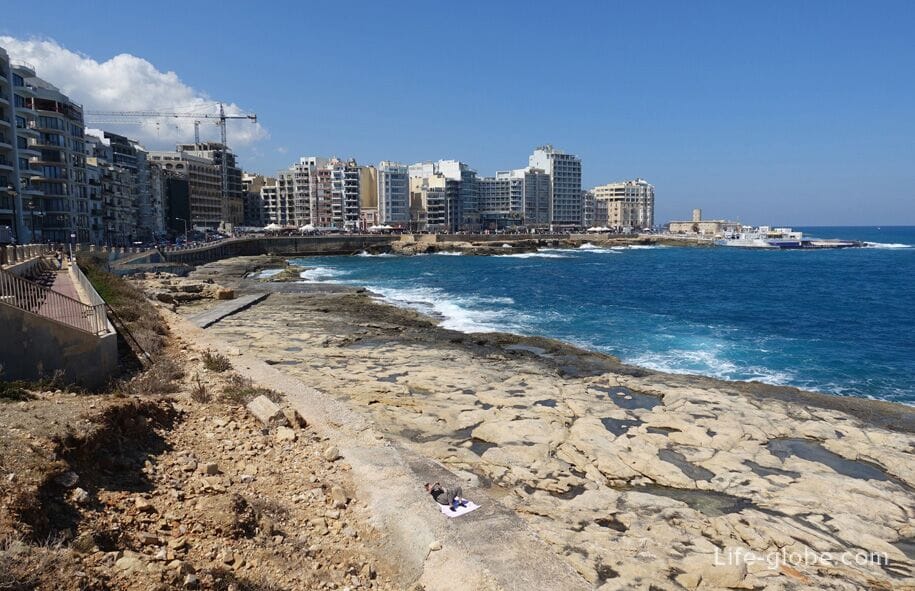
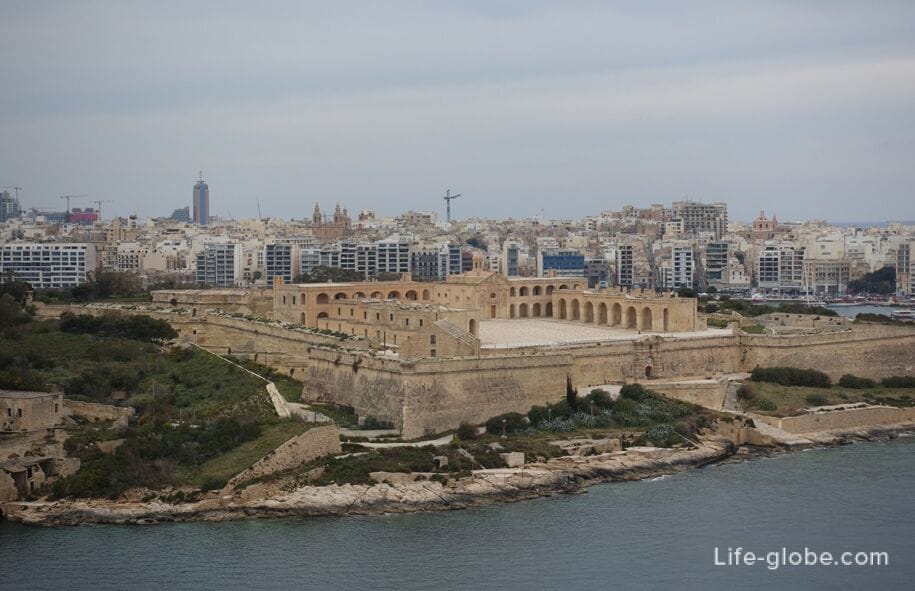

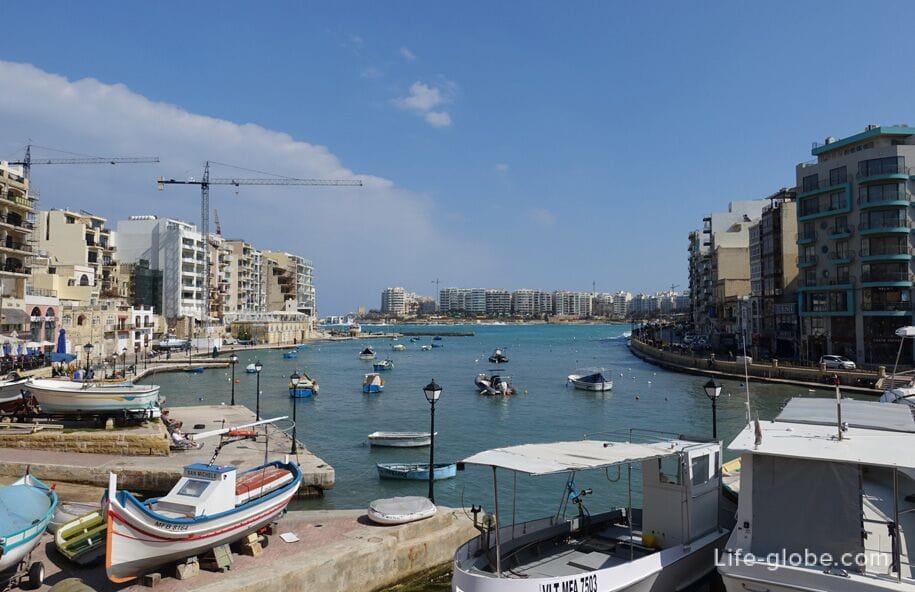
The former capital of Malta is the fortified city of Mdina.
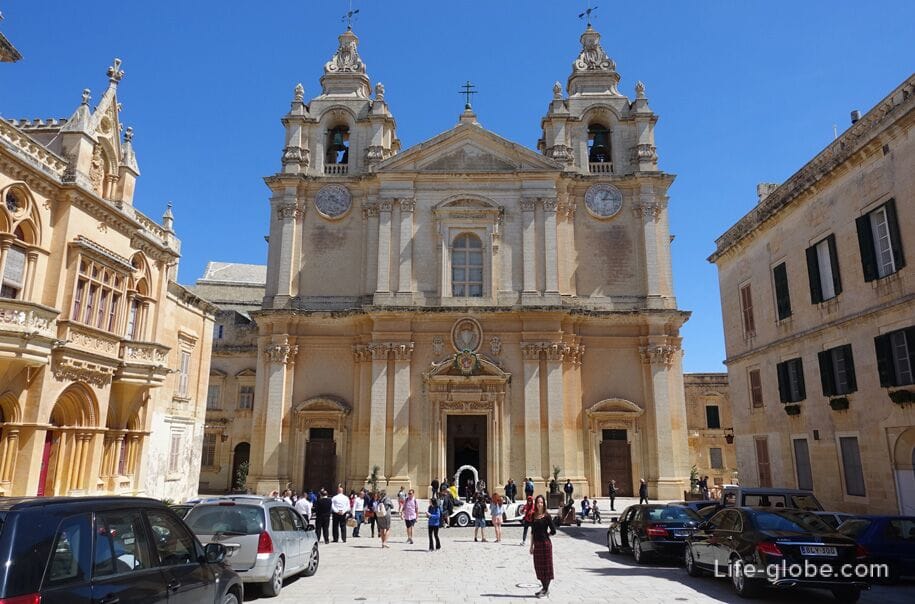
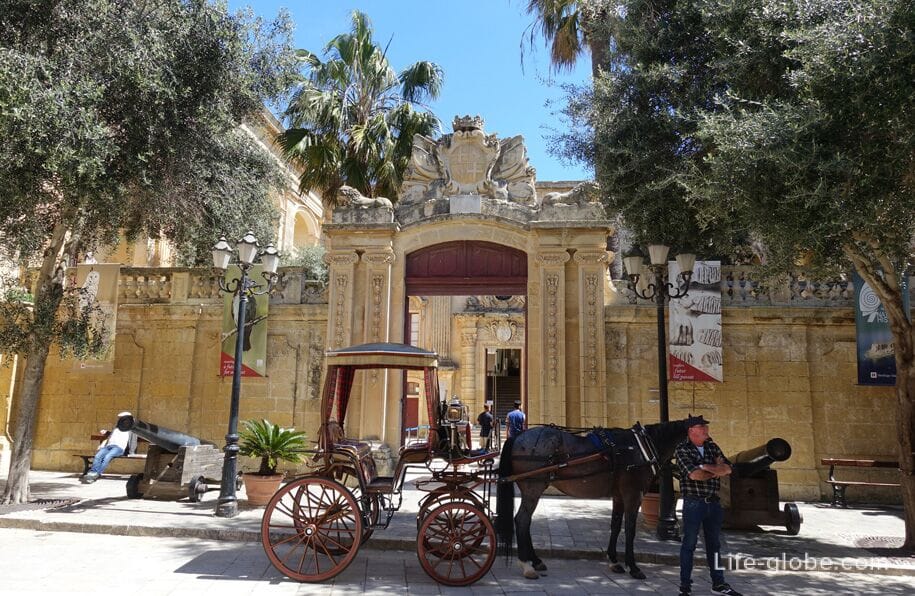
Mosta City, the main attraction of which is the Basilica Rotunda of the Assumption of the Virgin (Mosta Rotunda) with a bomb museum, an observation deck and an underground shelter.

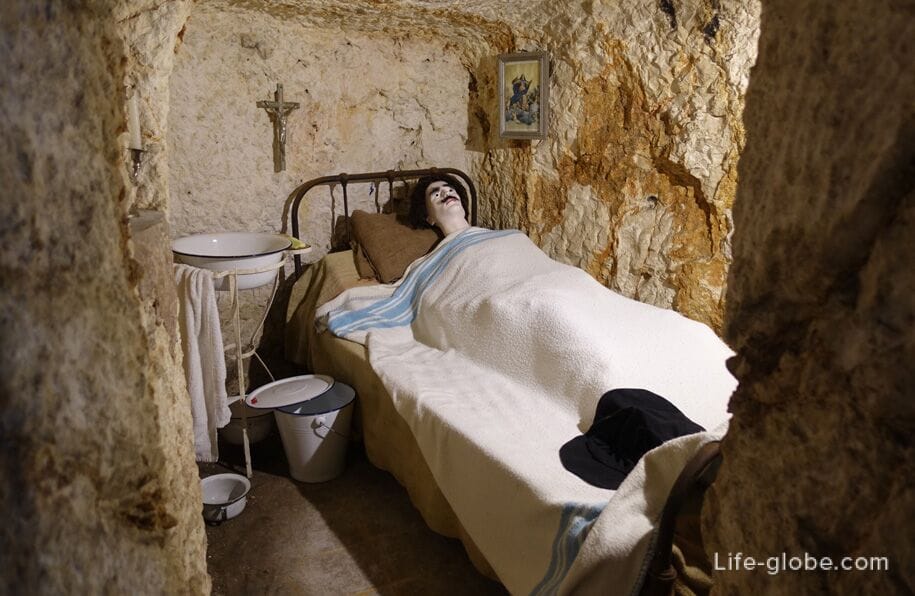
For a beach holiday on the island, it is worth visiting Marsashlokk, Birzebbuja, Mellieha, Sao Paul il Bahar, Mjarr.
Also on the island of Malta attract attention: Popeye Village and the Malta Aquarium (Malta National Aquarium).
The choice of accommodation facilities in Valletta is very large and diverse, ranging from 5-star hotels to apartments (full-fledged apartments with all amenities) and hostels.
Of the good hotels , you can distinguish:
Iniala Harbour House is a 5-star hotel with a wellness center with sauna, restaurant, free Wi-Fi, 24-hour front desk and family rooms.
The room rate may include breakfast. Link to the hotel
The Phoenicia Malta is a 5-star hotel, decorated in the style of the 1920s and located in the garden, next to the Triton Fountain.
The hotel features a lobby with live piano music, a seasonal outdoor infinity pool overlooking the harbor, a fitness center and free parking. Link to the hotel
The 5-star Rosselli Hotel is located in the center of Valletta, in a 17th-century building formerly owned by a member of the Order of Malta.
The hotel has a swimming pool, an outdoor terrace with panoramic views, a bar, a Michelin-starred restaurant and free Wi-Fi.
Breakfast may be included in the room rate. Link to the hotel
The 5-star Grand Hotel Excelsior Resort is located near the historic entrance to Valletta. The hotel offers views of Marsamchette Harbour and Manoel Island.
At the hotel: landscaped garden, private beach and spa, outdoor and indoor pools, pool bar with panoramic sea views, restaurants, bars, gym, free Wi-Fi and free parking.
Breakfast may be included in the room rate. Link to the hotel
From 4-star hotels: The Embassy Valletta Hotel and Casa Ellul - Small Luxury Hotels of the World.
All accommodation facilities in Valletta can be viewed and booked here
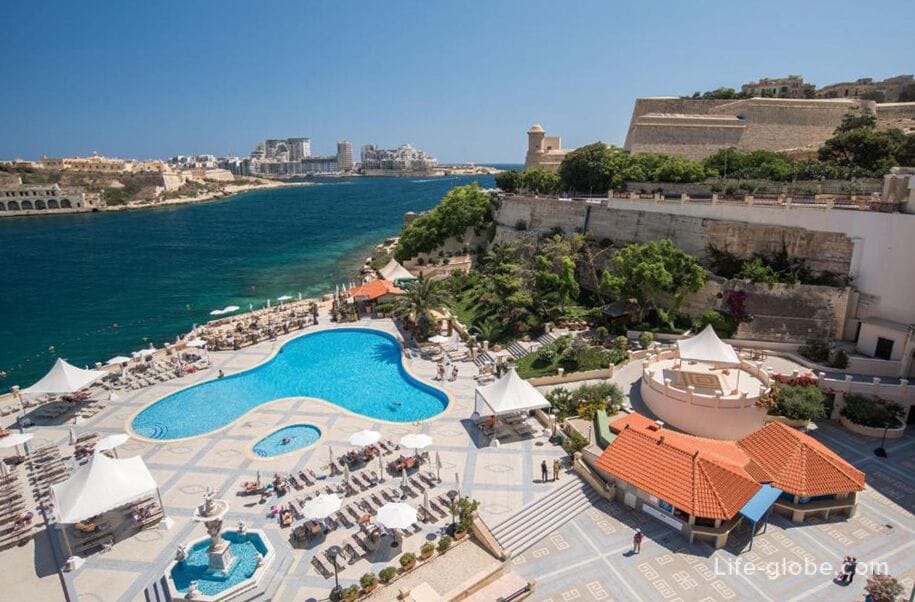
The best, and for many the only way to get to Malta, including Valletta, is by plane.
There is only one airport on the territory of Malta - Malta International Airport, located in the municipality of Luka on the island of Malta.
The airport regularly sends and receives flights from many European cities, as well as from Asia, Africa, including direct flights connecting Malta with Russia. Flights to Malta →
You can get from the airport to Valletta
Taxi. You can order a taxi / transfer in advance, even from home. At any time of the day, a driver will be waiting for you at the airport with a sign where your first and last name will be written. To order a taxi, it is enough to provide your flight data!
Car. If you are planning to travel to Malta, then car rental will be an ideal option. You can choose and order a car in advance, at the appointed time your car will be waiting for you near the airport.
The buses. Public buses run around Malta, including those connecting the airport with Valletta and Valletta with other cities of the island. Malta public transport website: publictransport.

Valletta is easy to get around on foot, and from the city on the island of Malta you can take public buses, which in Valletta stop at the square near the Triton Fountain and the City Gate.
There are also various transport cards that give the right to several trips; and the Valletta Card, which includes bus and ferry rides from Valletta, as well as visits to some of the city's museums.
You can find out about all bus routes and city ferries, as well as map variations on the Malta Public Transport website (website: publictransport).
Malta is part of the Schengen area. To visit the country, you may need travel insurance.
Malta is part of the euro area - the currency of the country is Euro (€). Both cash and bank cards are accepted in many shops, cafes and restaurants.
